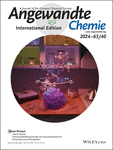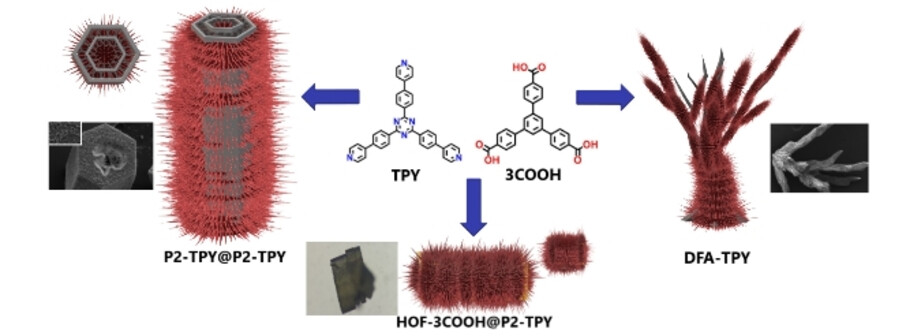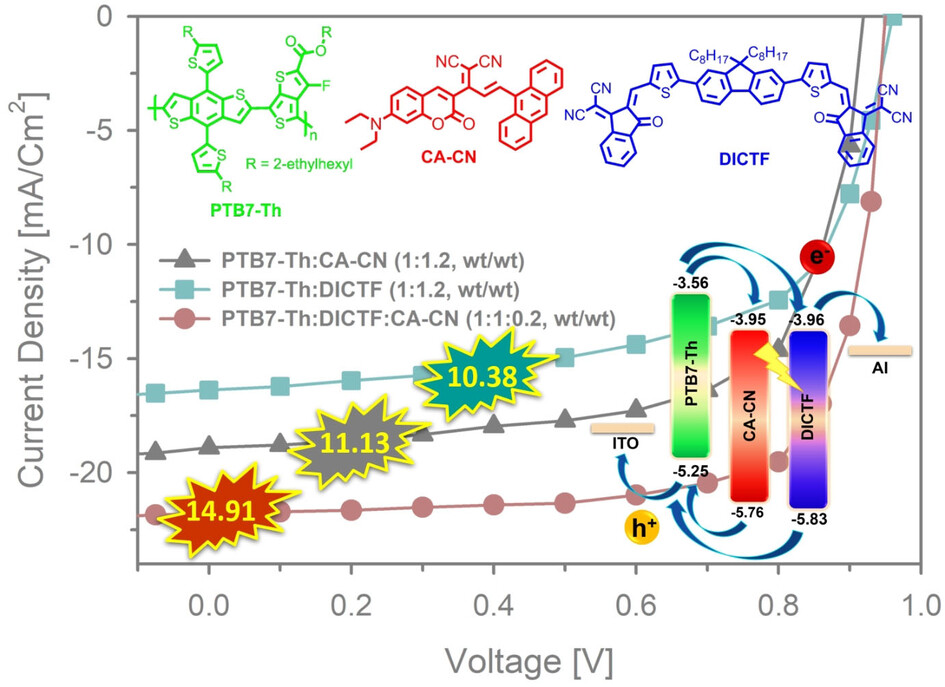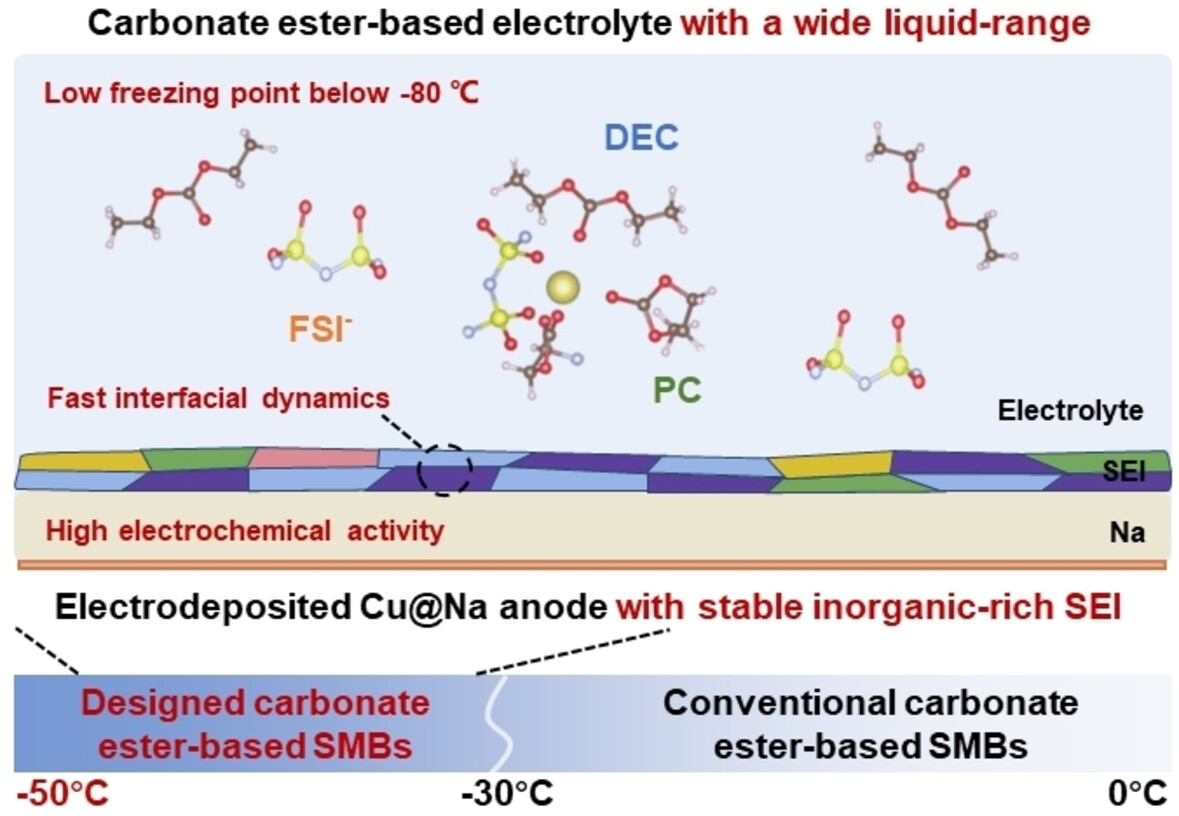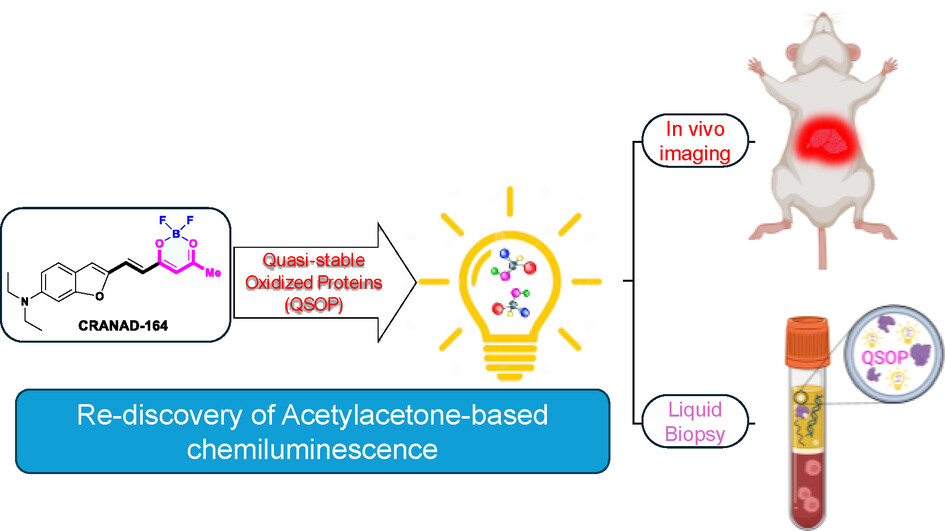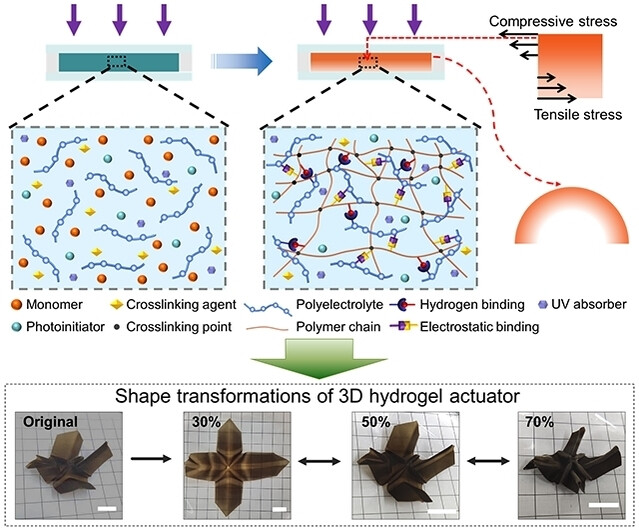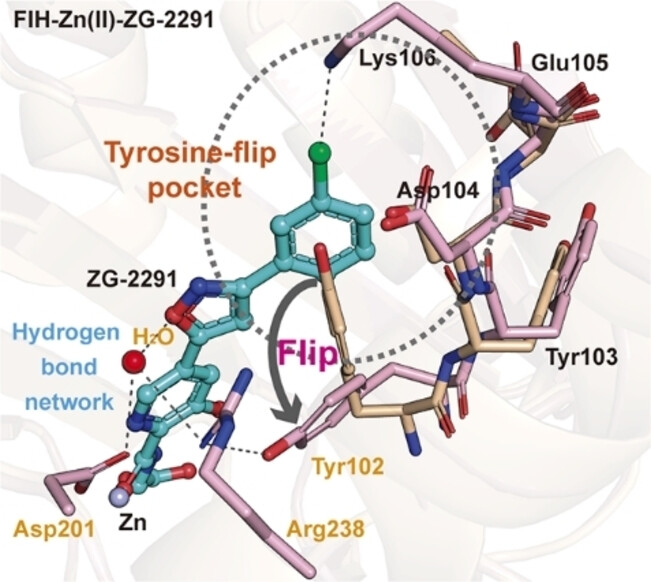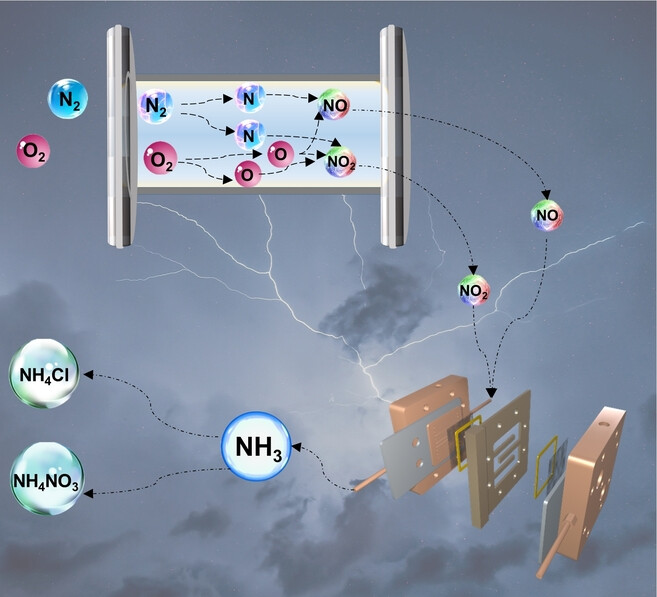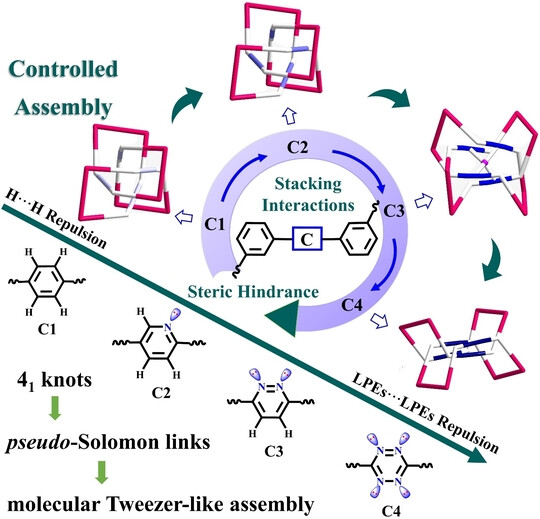Journal list menu
Export Citations
Download PDFs
Cover
Cover Picture: Tailoring Metallosupramolecular Glycoassemblies for Enhancing Lectin Recognition (Angew. Chem. Int. Ed. 40/2024)
- First Published: 01 August 2024
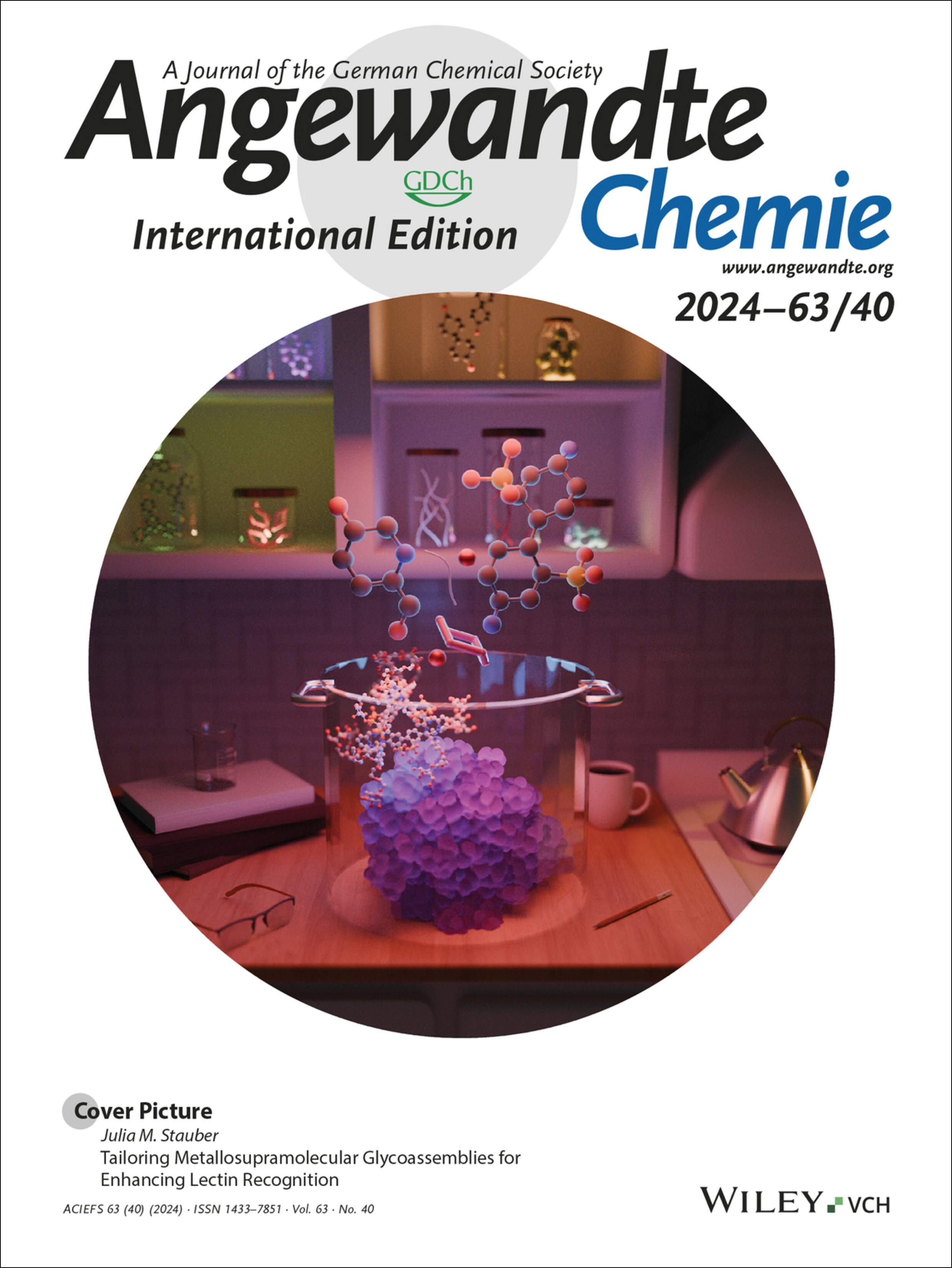
Supramolecular self-assembly offers rational control over molecular properties through the careful selection and combination of subcomponents. In a Research Article from the Stauber lab (e202408751), this approach optimizes the binding strength of hybrid molecular glycoassemblies with protein targets by adjusting carbohydrate linking units, assembly size, and molecular charge. Similar to selecting the perfect combination of ingredients in a kitchen, this method allows for the customization of biomolecular binding properties through choice of the right molecular building blocks.
Inside Cover: Antigen Delivery Controlled by an On-Demand Photorelease (Angew. Chem. Int. Ed. 40/2024)
- First Published: 01 August 2024
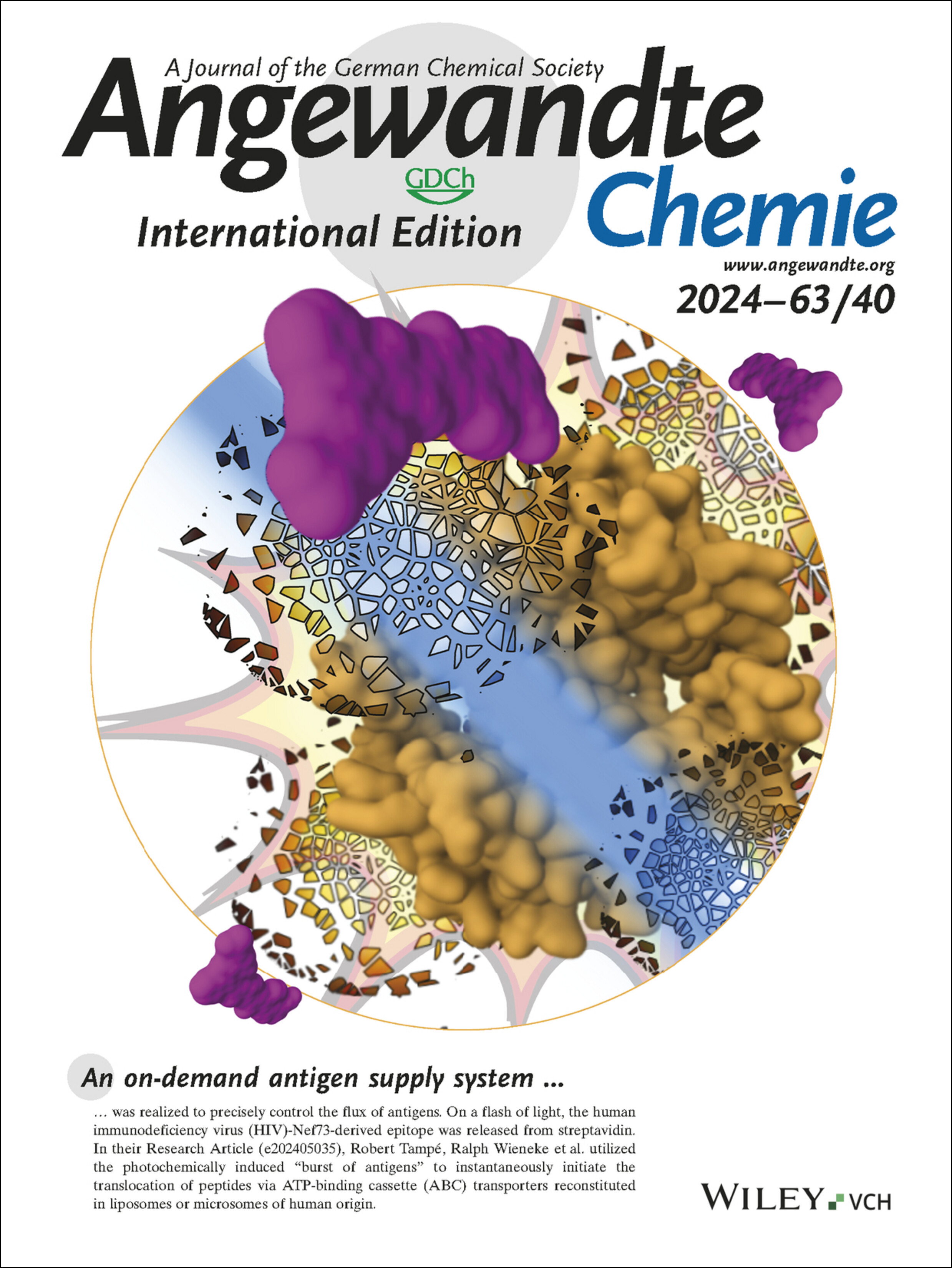
An on-demand antigen supply system was realized to precisely control the flux of antigens. On a flash of light, the human immunodeficiency virus (HIV)-Nef73-derived epitope was released from streptavidin. In their Research Article (e202405035), Robert Tampé, Ralph Wieneke et al. utilized the photochemically induced “burst of antigens” to instantaneously initiate the translocation of peptides via ATP-binding cassette (ABC) transporters reconstituted in liposomes or microsomes of human origin.
Inside Back Cover: A Small-Molecule Inhibitor of Factor Inhibiting HIF Binding to a Tyrosine-Flip Pocket for the Treatment of Obesity (Angew. Chem. Int. Ed. 40/2024)
- First Published: 24 September 2024
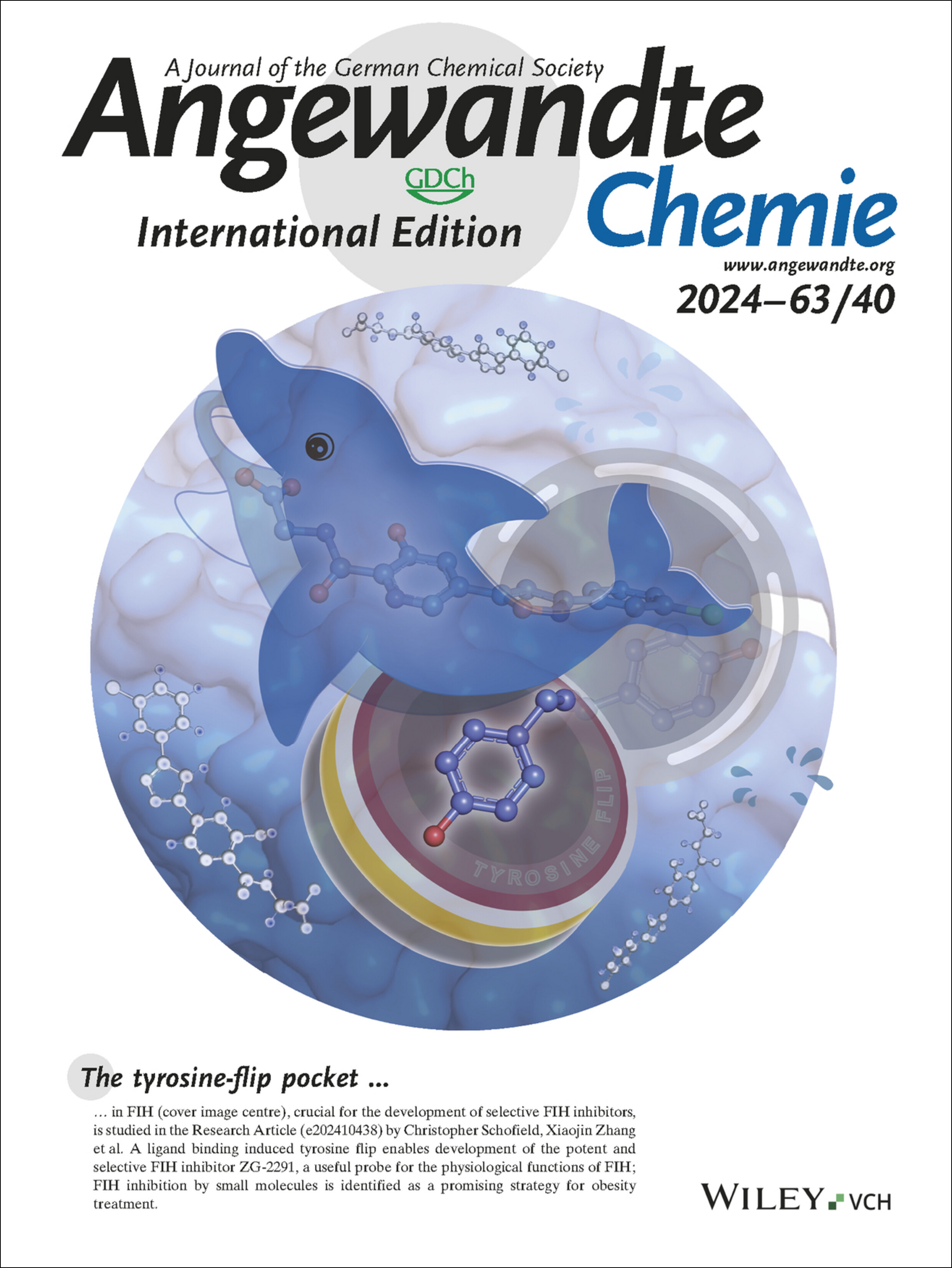
The tyrosine-flip pocket in FIH (cover image centre), crucial for the development of selective FIH inhibitors, is studied in the Research Article (e202410438) by Christopher Schofield, Xiaojin Zhang et al. A ligand binding induced tyrosine flip enables development of the potent and selective FIH inhibitor ZG-2291, a useful probe for the physiological functions of FIH; FIH inhibition by small molecules is identified as a promising strategy for obesity treatment.
Back Cover: A General Descriptor for Single-Atom Catalysts with Axial Ligands (Angew. Chem. Int. Ed. 40/2024)
- First Published: 01 August 2024
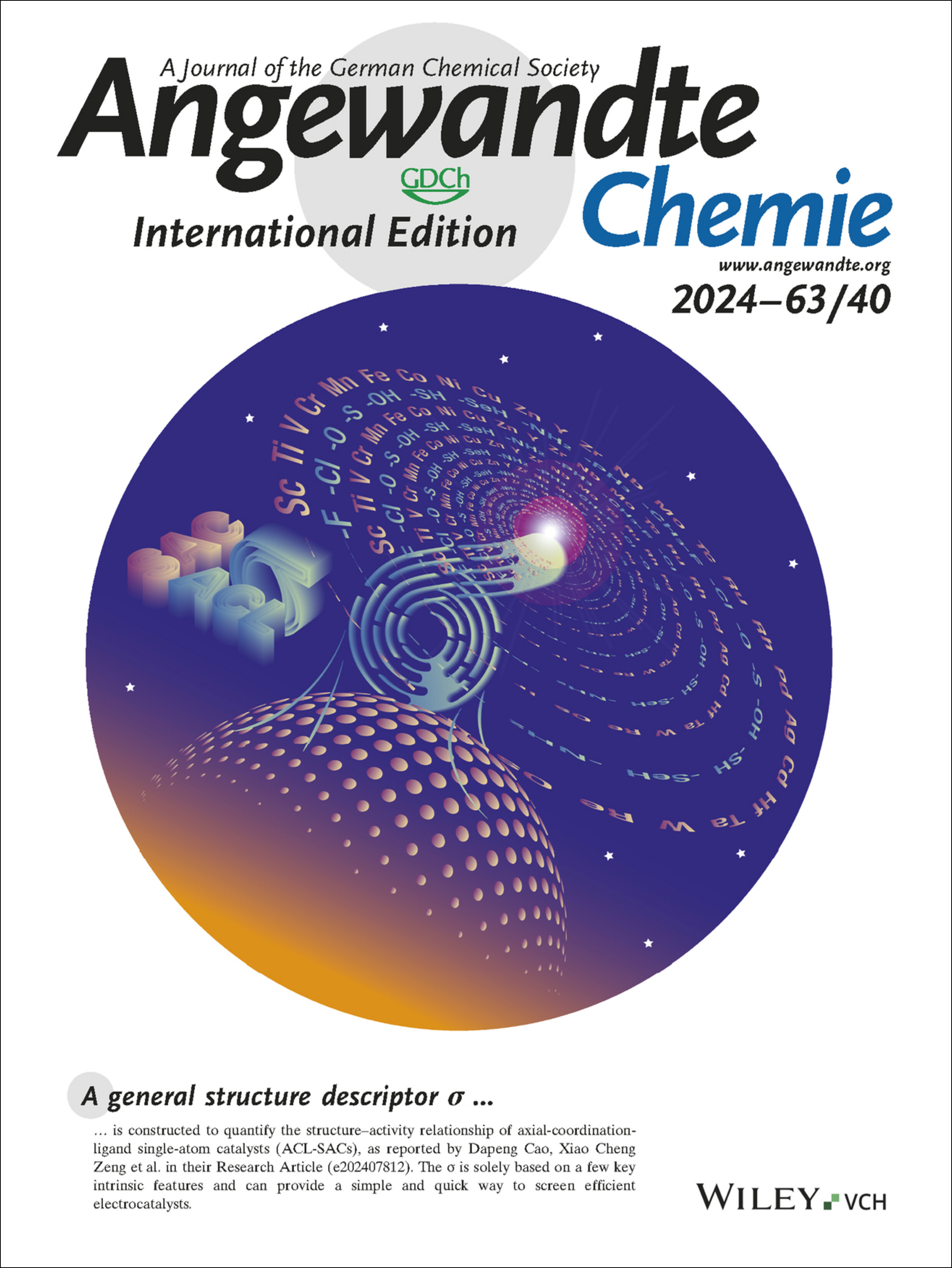
A general structure descriptor σ is constructed to quantify the structure–activity relationship of axial-coordination-ligand single-atom catalysts (ACL-SACs), as reported by Dapeng Cao, Xiao Cheng Zeng et al. in their Research Article (e202407812). The σ is solely based on a few key intrinsic features and can provide a simple and quick way to screen efficient electrocatalysts.
Frontispiece
Frontispiece: Divergent Synthesis of Sulfur-Containing Bridged Cyclobutanes by Lewis Acid Catalyzed Formal Cycloadditions of Pyridinium 1,4-Zwitterionic Thiolates and Bicyclobutanes
- First Published: 24 September 2024
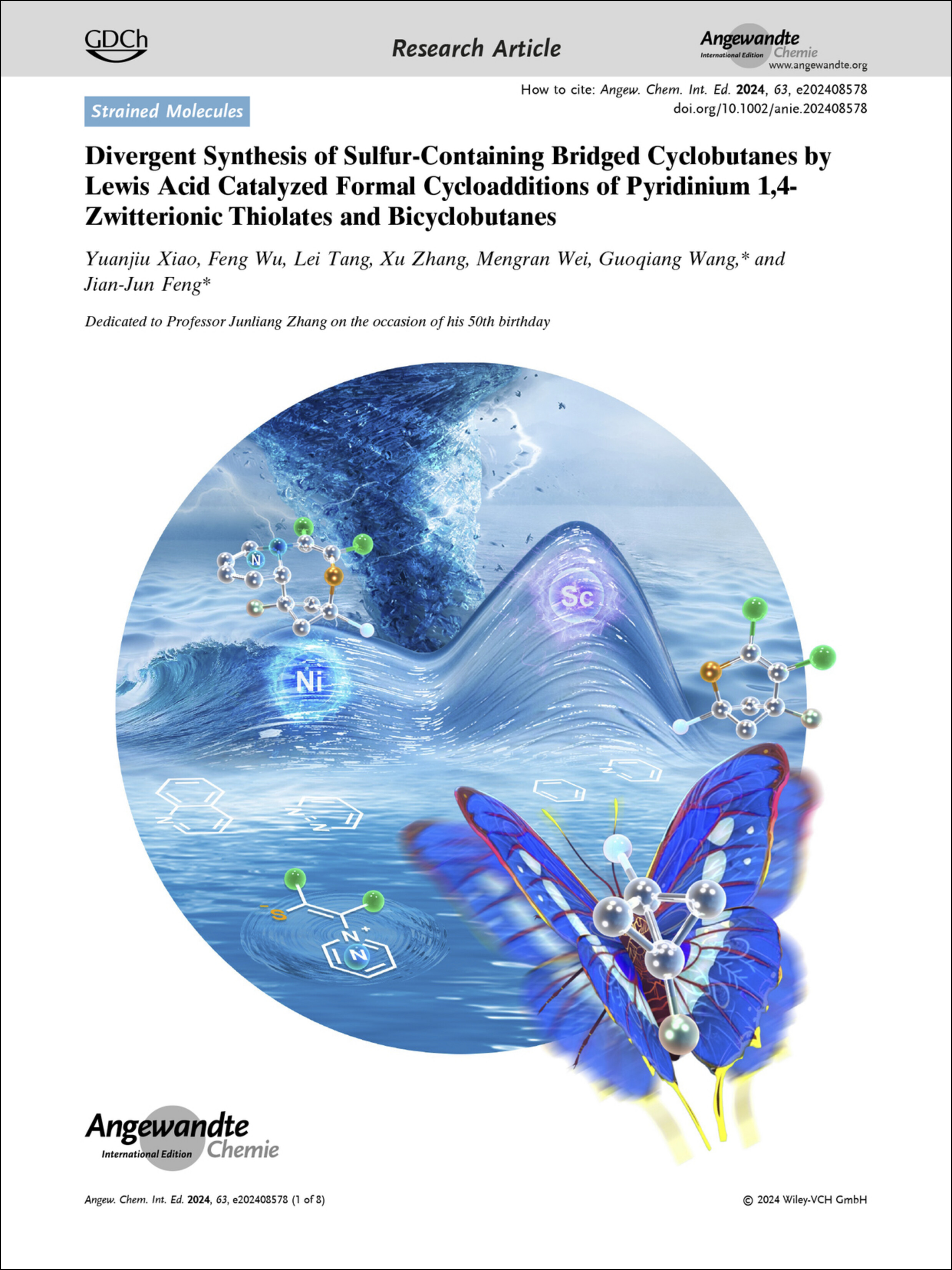
Cycloadditions. Bicyclo[n.1.1]alkanes show great promise in substituting planar aromatic rings, akin to the "butterfly effect". In their Research Article (e202408578), Jian-Jun Feng et al. present a Lewis acid-catalyzed cycloaddition of bicyclobutanes (butterfly conformation) with 2D pyridinium thiolate derivatives.
Graphical Abstract
Graphical Abstract: Angew. Chem. Int. Ed. 40/2024
- First Published: 24 September 2024
Announcement
Classifieds: Jobs and Awards, Products and Services
- First Published: 24 September 2024
Introducing …
Yuan Yang
- First Published: 20 August 2024

“My biggest motivation is to develop innovative, useful, and interesting new methods in organic synthesis… The most important thing I have learned from my students is that their uniqueness and differences require me to interact with them in different ways, so as to fully bring out their strengths…” Find out more about Yuan Yang in his Introducing… Profile.
Andrew Pun
- First Published: 22 August 2024

“The most exciting thing about my research is seeing a cuvette light up when a new compound upconverts light… The best advice I have ever been given is that everyone's advice is based on personal experience. At some point you have to make your own way…” Find out more about Andrew Pun in his Introducing… Profile.
Minireview
Metalates
Challenges and Applications of Supramolecular Metalate Chemistry
- First Published: 18 July 2024
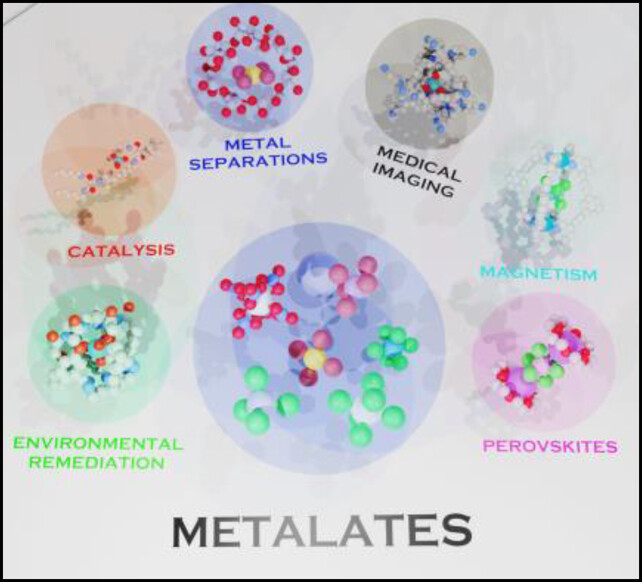
The supramolecular chemistry of metalate anions is relatively unexplored and far less understood compared with simple anions. This review discusses the latest advances in supramolecular metalate chemistry, highlighting its important role across a diverse range of applications including medical imaging, environmental remediation, perovskite materials, magnetism, catalysis, and metal separations.
Review
Water Treatment
In Situ Production of Hydroxyl Radicals via Three-Electron Oxygen Reduction: Opportunities for Water Treatment
- First Published: 15 July 2024
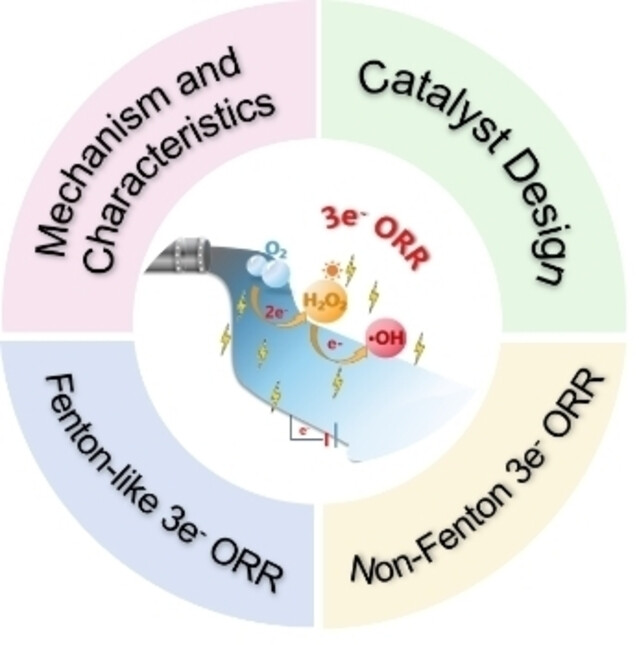
This review focuses on the in situ production of the hydroxyl radical (⋅OH) via the novel three-electron oxygen reduction reaction (3e− ORR) to provide insights for overcoming the bottlenecks of the traditional electro-Fenton process. The features and mechanisms of the 3e− ORR, including its basic principles and latest progress, are explored. Additionally, practical water-treatment applications, future developments, and challenges are discussed.
Polymer Recycling
Dynamic Covalent Bonds Enabled Carbon Fiber Reinforced Polymers Recyclability and Material Circularity
- First Published: 20 July 2024
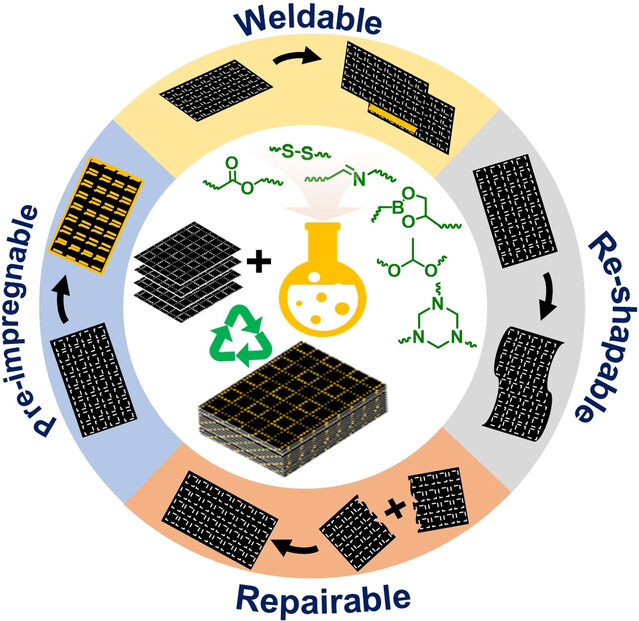
Integrating covalent adaptable networks (CANs) with carbon fiber reinforced polymers (CFRPs) offers a new avenue for closed-loop recyclable CFRPs. This review highlights the recent developments, focusing on crosslinking polymers made from CANs, emphasizing applications in carbon fiber recycling and resin sustainability.
Research Article
Strained Molecules
Hydrogen-bonded Organic Frameworks
A Simple and Sequential Strategy for the Introduction of Complexity and Hierarchy in Hydrogen-Bonded Organic Framework (HOF) Crystals for Environmental Applications
- First Published: 03 July 2024
Optochemical Biology | Very Important Paper
Antigen Delivery Controlled by an On-Demand Photorelease
- First Published: 31 May 2024
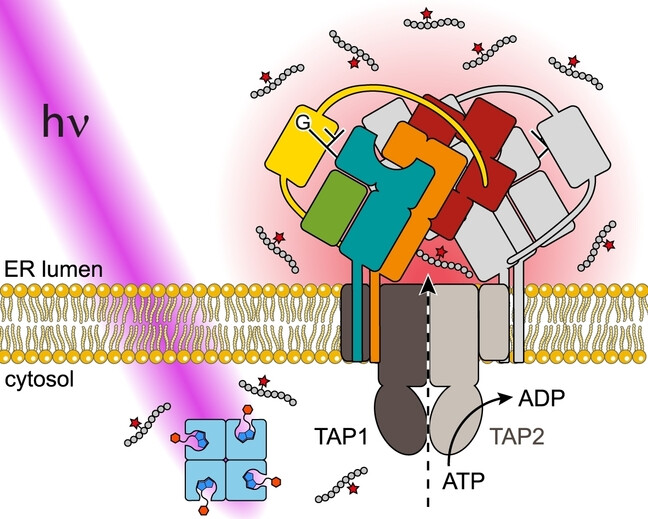
The transporter associated with antigen processing (TAP) shuttles peptides into the endoplasmic reticulum (ER) for the loading of Major Histocompatibility Complex class I (MHC I) molecules. Here, we established an approach to precisely control antigen transport by light. Upon a photochemically induced ‘burst’ of antigens, we investigated peptide translocation by single-organelle recordings within the native peptide loading complex (PLC) containing TAP.
Upconversion Nanocrystals
Fluorine Doping Mediated Epitaxial Growth of NaREF4 on TiO2 for Boosting NIR Light Utilization in Bioimaging and Photodynamic Therapy
- First Published: 02 September 2024
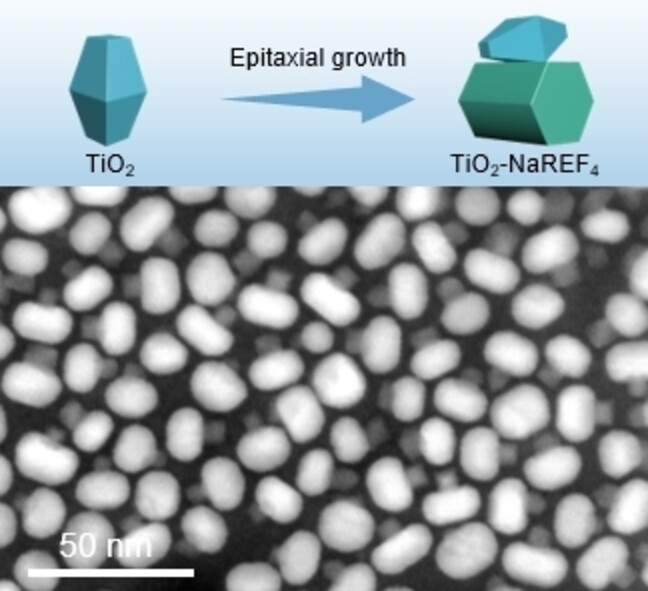
A fluorine doping-mediated epitaxial growth strategy was developed for the synthesis of TiO2-NaREF4 heteronanocrystals (HNCs). Due to the epitaxial growth connection, NaREF4 can transfer energy through phonon-assisted pathway to TiO2, which is more efficient than the traditional indirect secondary photon excitation.
Photocatalysis
Proton-Enriched Alginate–Graphene Hydrogel Microreactor for Enhanced Hydrogen Peroxide Photosynthesis
- First Published: 08 July 2024
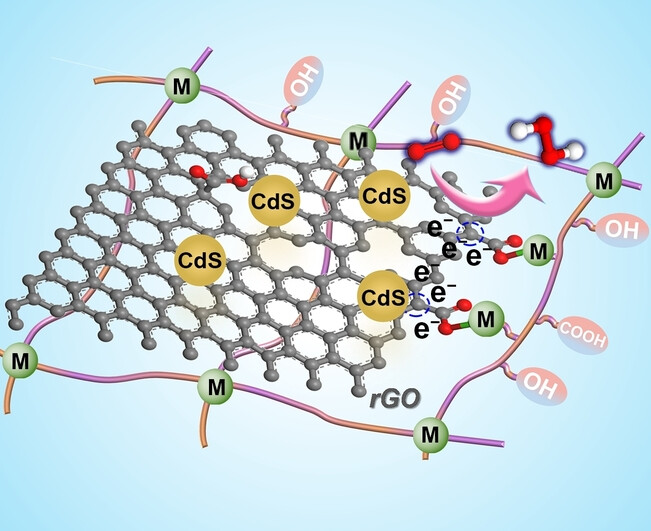
This study establishes a graphene–alginate hydrogel system cross-linked by metal ions M(n), addressing the challenges of insufficient proton supply and stable detachment of the intermediate *OOH in photocatalytic ORR reactions. The alginate framework facilitates proton relay, while the role of metal ions was evident through Lewis acidity-dependent activity for H2O2 production.
Organic Solar Cells | Hot Paper
An Asymmetric Coumarin-Anthracene Conjugate as Efficient Fullerene-Free Acceptor for Organic Solar Cells
- First Published: 13 May 2024
Cell Imaging | Hot Paper
Multiplexed and Quantitative Imaging of Live-Cell Membrane Proteins by a Precise and Controllable DNA-Encoded Amplification Reaction
- First Published: 09 July 2024

The template adhesion reaction represents a simple and precisely controllable amplification approach, which enables to assemble amplifiable DNA sequences with affinity ligands for proportional amplification and sensitive visualization of multiple membrane protein targets with enhanced signal-to-noise ratios while maintaining their original concentration ratios.
Na Metal Batteries | Very Important Paper
Biocatalysis
Carbonic Anhydrase Variants Catalyze the Reduction of Dialkyl Ketones with High Enantioselectivity
- First Published: 02 July 2024

The enantioselective reduction of dialkyl ketones containing two similar alkyl groups is challenging. Although human carbonic anhydrase II (hCAII) naturally catalyzes the reaction of achiral water and CO2 to form achiral carbonic acid, the active zinc site in hCAII catalyzes, through a zinc-hydride, highly enantioselective reductions of a wide range of dialkyl ketones. Variants of hCAII react with distinct selectivites.
Fluorine Chemistry
Ligand-Controlled Copper-Catalyzed Halo-Halodifluoromethylation of Alkenes and Alkynes Using Fluorinated Carboxylic Anhydrides
- First Published: 09 July 2024
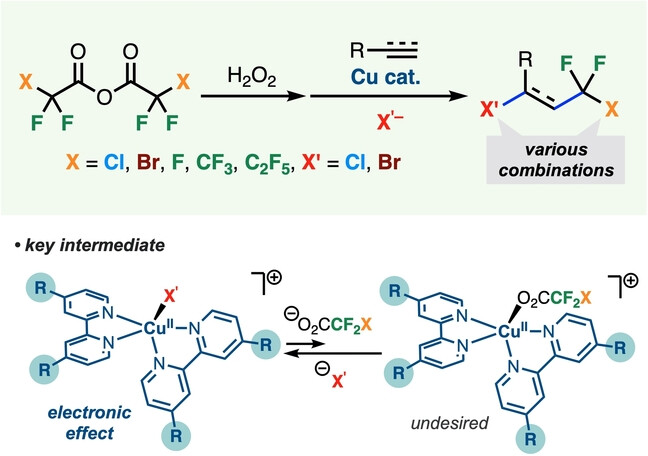
A Cu-catalyzed three-component halo-halofluoroalkylation of alkenes/alkynes using fluorinated carboxylic anhydrides and alkali metal halides was developed, enabling the introduction of halodifluoromethyl (CF2X) and halogen (X’) groups with the desired combination of X and X’. The reactivity of the resulting products as building blocks was examined, and the detailed reaction mechanism was discussed with a focus on the ligand effect.
Anode-Less Zn Batteries
Hydrophobic Ion Barrier-Enabled Ultradurable Zn (002) Plane Orientation towards Long-Life Anode-Less Zn Batteries
- First Published: 08 July 2024
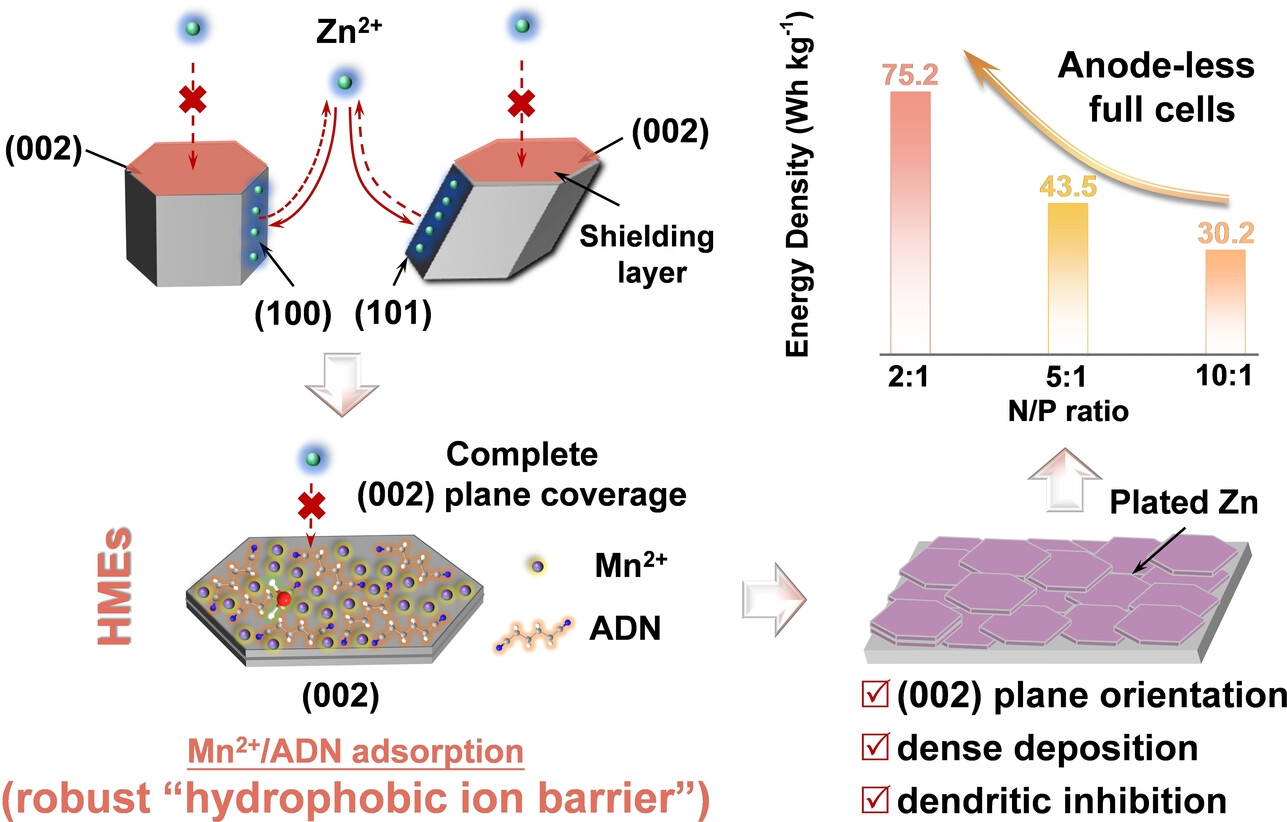
A steric hindrance/electric field shielding-driven “hydrophobic ion barrier” is engineered towards ultradurable (002) plane-exposed Zn stripping/plating in original Zn2+-free hydrated electrolytes. As-assembled anode-less Zn‖VOPO4 ⋅ 2H2O full cells (N/P ratio: 2 : 1) show a high energy density of 75.2 Wh kg−1 full electrode after 842 cycles at 1 A g−1, far surpassing conventional counterpart with thick Zn anode and low cathode loading mass.
Light-Emitting Diodes | Hot Paper
Ligand-Solvent Coordination Enables Comprehensive Trap Passivation for Efficient Near-Infrared Quantum Dot Light-Emitting Diodes
- First Published: 10 July 2024
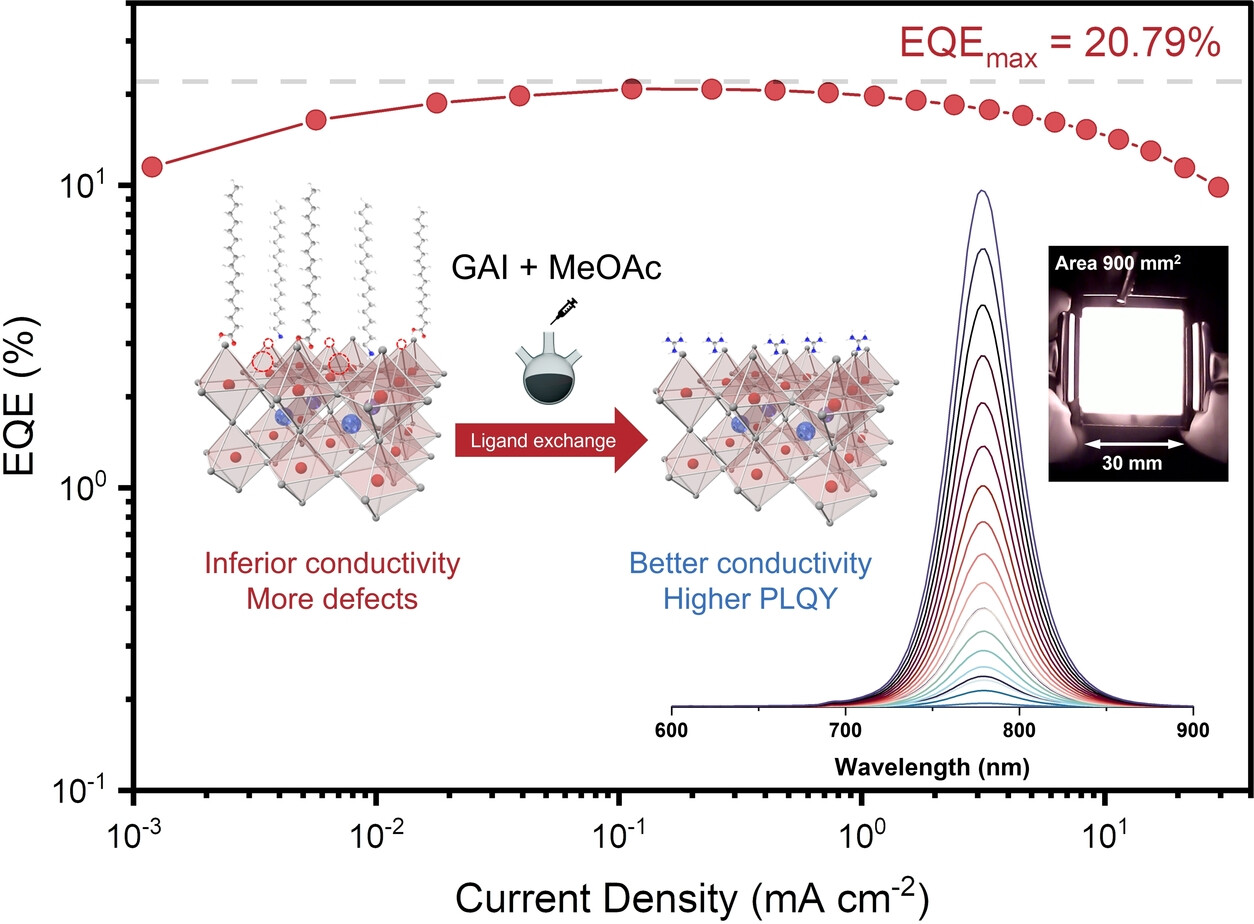
We reported a ligand/anti-solvent coordination strategy to resurface the near-infrared (NIR) perovskite quantum dots. The short and conductive agent dissolved in the antisolvent improved conductivity and ensured well passivation. We fabricate NIR light-emitting diodes (NIR LED) with these high-mobility and trap-free films, and achieved an EQE of ~21 %. We further demonstrate that this strategy applies to large-area NIR LEDs up to 900 mm2.
Organic Thermoelectrics | Hot Paper
High-Performance n-Type Organic Thermoelectrics with Exceptional Conductivity by Polymer-Dopant Matching
- First Published: 08 July 2024
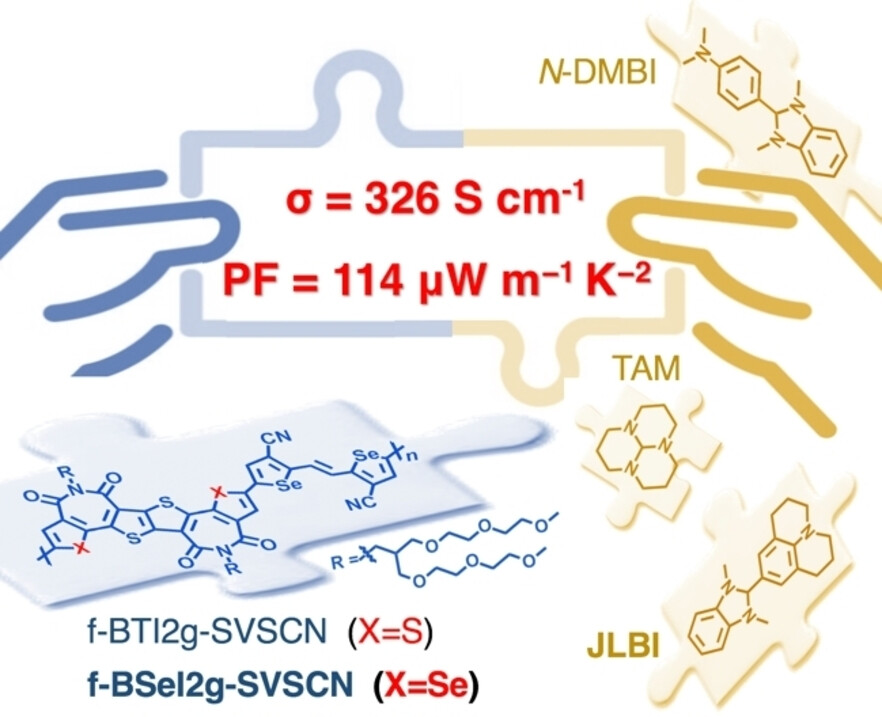
Impressive n-type thermoelectric performances with a conductivity of 326 S cm−1 and power factor as high as 114 μWm−1 K−2 were realized through the approach of polymer-dopant matching, which involved blending two n-type polymers, f-BTI2g-SVSCN and f-BSeI2g-SVSCN, with a julolidine functionalized benzimidazoline n-dopant (JLBI) in addition to the state-of-the-art TAM and N-DMBI dopants.
Asymmetric Catalysis
One-Step Synthesis of Chiral 9,10-Dihydrophenanthrenes via Ligand-Enabled Enantioselective Cascade β,γ-Diarylation of Acids
- First Published: 09 July 2024
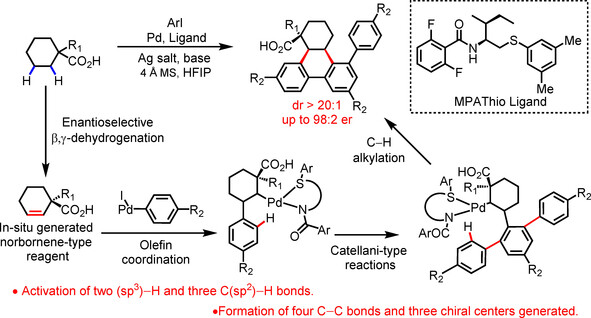
The Pd-catalyzed enantioselective cascade β,γ-methylene C(sp3)−H diarylation of free carboxylic acids using bidentate chiral mono-protected amino thioether ligands (MPAThio), enabling one-step synthesis of a complex chiral 9,10-dihydrophenanthrene scaffolds with high enantioselectivity was presented. In this process, two methylene C(sp3)−H bonds and three C(sp2)−H bonds were activated, leading to the formation of four C−C bonds and three chiral centers in one pot. Mechanistic studies revealed the intermediacy and crucial role of chiral β,γ-cyclohexene derived from enantioselective β,γ-dehydrogenation as a norbornene-type reagent, orchestrating two successive Catellani reactions to furnish chiral 9,10-dihydrophenanthrenes.
Rotational Spectroscopy | Hot Paper
Structural and Electronic Evolution of Ethanolamine upon Microhydration: Insights from Hyperfine Resolved Rotational Spectroscopy
- First Published: 10 July 2024

How many water molecules are needed to dissolve a base molecule? Using rotational spectroscopy, we explored the electronic environment of the −NH2 group in ethanolamine under microhydration. By measuring the 14N nuclear-spin quadrupole coupling, we found a strong correlation between the ionicity of −NH2 and nearby hydrogen bonds, pushing it towards the −NH3+ configuration.
Molecular Recognition
Tailoring Metallosupramolecular Glycoassemblies for Enhancing Lectin Recognition
- First Published: 03 June 2024
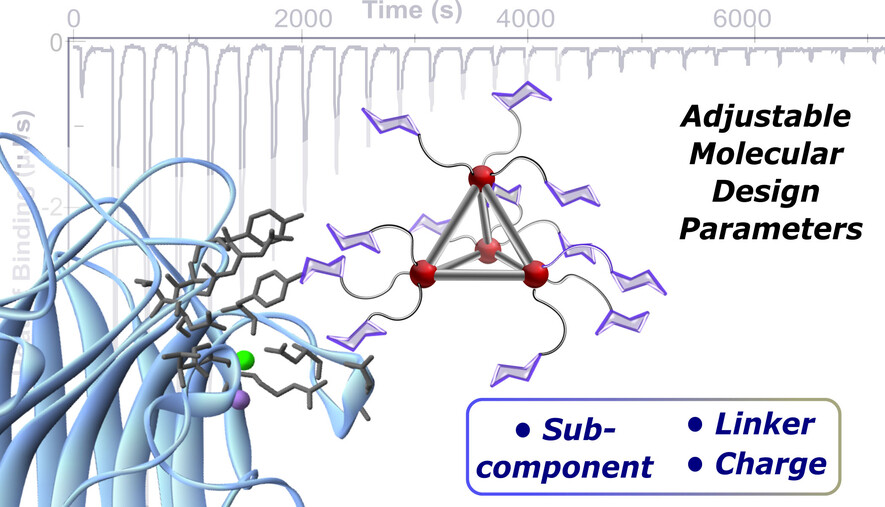
A supramolecular approach to the design of structurally precise glyconanoassemblies that leverages the versatility, tunability and modularity of subcomponent self-assembly is described. Structural and electronic changes in ligand architecture enable a systematic method for understanding intricate structure–activity relationships governing multivalent lectin binding, thus offering insights into optimizing molecular recognition through synthetic design.
Phase Change Fibers | Very Important Paper
Intrinsically Flexible Phase Change Fibers for Intelligent Thermal Regulation
- First Published: 12 July 2024
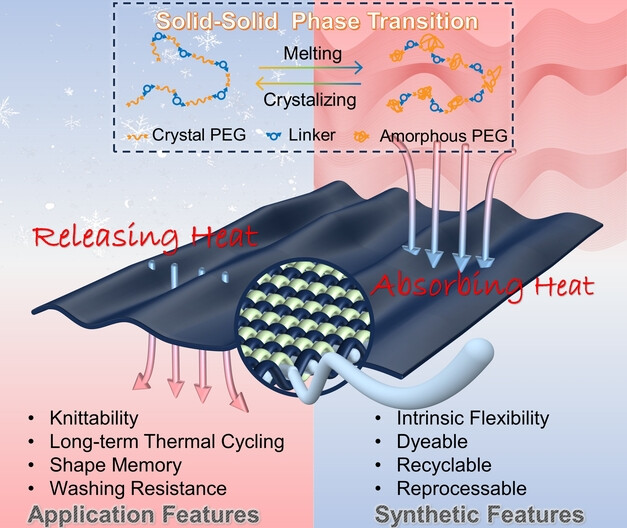
This work presents intrinsically flexible solid-solid phase change fibers through wet-spinning for the first time. The fibers also exhibit excellent knittability, dyeability, recyclability, heat-induced shape recovery, washing resistance, and long-term thermal cycle stability. This intrinsically flexible phase change fiber has promising application prospects in wearable intelligent thermal management.
Dual-Atom Catalysts | Hot Paper
Cascade Synthesis of Fe-N2-Fe Dual-Atom Catalysts for Superior Oxygen Catalysis
- First Published: 03 July 2024
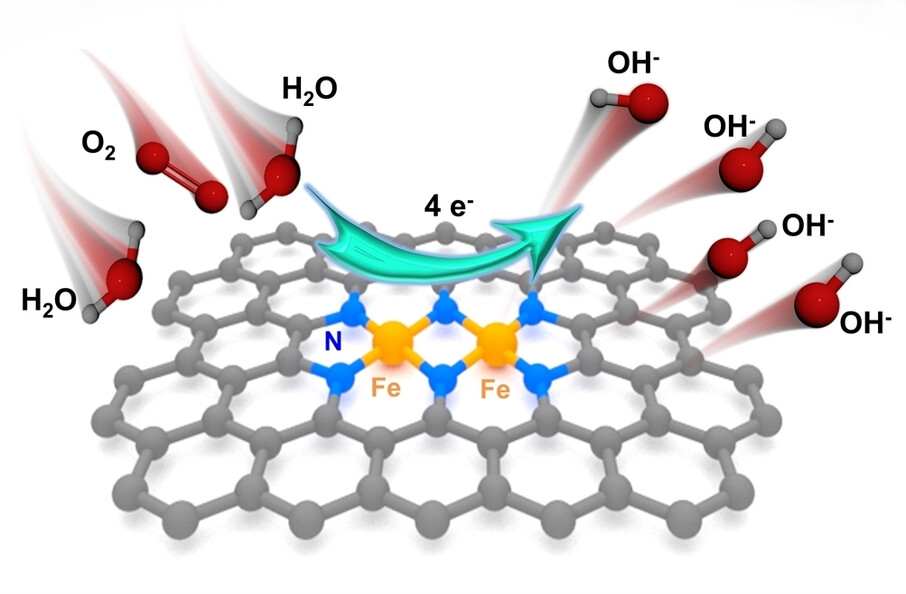
We report a cascade synthetic strategy for preparing well-defined dual-atom catalysts (DAC). As a proof-of-concept, we constructed a Fe dual-atom catalyst bridged by two nitrogen atoms, which exhibited excellent oxygen reduction performance. Theoretically, our strategy can be further extended to synthesizing DACs with various metal categories and coordination environments, facilitating the construction of a DAC library for different reaction applications.
Hydrogen Storage
Highly Dispersed Pd-CeOx Nanoparticles in Zeolite Nanosheets for Efficient CO2-Mediated Hydrogen Storage and Release
- First Published: 11 July 2024
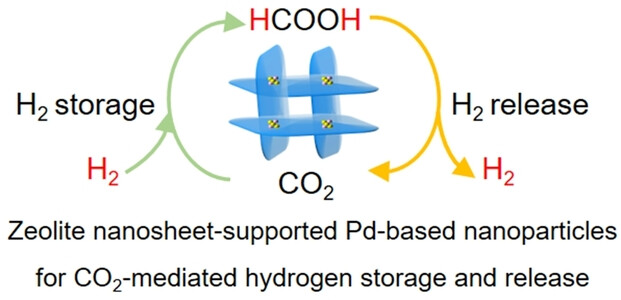
This study introduces the synthesis of bimetallic Pd-based nanocatalysts on zeolite nanosheets, demonstrating exceptional catalytic performance in formic acid dehydrogenation and CO2 hydrogenation to formate. The outstanding catalytic performance is attributed to significantly enhanced thermal stability, metal utilization, and transport efficiency. These findings offer crucial insights for advancing safe, efficient, and sustainable hydrogen technology development.
Metal Nanoclusters | Hot Paper
Micro-Ring Morphology of Ag7NCs and Light-Induced Reversible Interconversion of FCC Ag14NCs via Cu2+ ions-Mediated Particle-Assisted Reversible Interconversion
- First Published: 27 June 2024
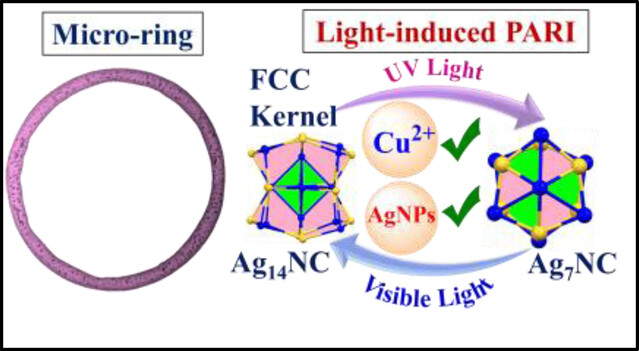
The present investigation demonstrates the light-induced reversible interconversion of FCC Ag14NCs to Ag7NCs. UV light triggers the transformation of FCC Ag14NCs to Ag7NCs, whereas visible light induces the reversible interconversion of Ag7NCs to Ag14NCs. This study also reveals the formation of micro-ring morphology, a unique supramolecular assembly in metal nanoclusters.
Lithium Metal Batteries
Dilute Electrolytes with Fluorine-Free Ether Solvents for 4.5 V Lithium Metal Batteries
- First Published: 10 July 2024
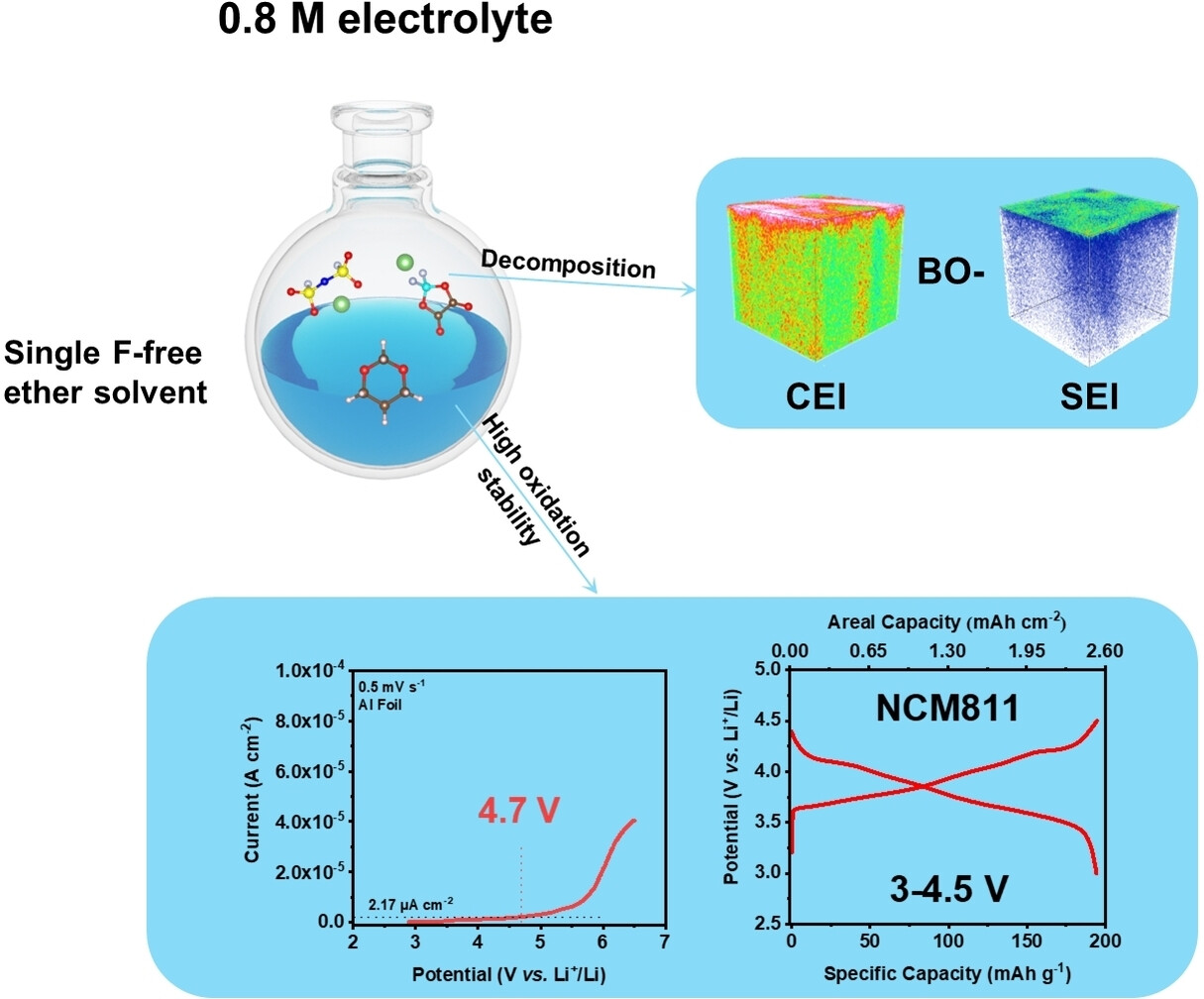
Through salt modulation, high oxidation stability can be achieved for a 0.8 M dilute electrolyte consisting of a single fluorine (F)-free ether solvent. The boron (B)-containing cathode electrolyte interphase (CEI) and solid electrolyte interphase (SEI) formed by the salt decomposition enable stable cycling of lithium metal batteries with a high-loading LiNi0.8Co0.1Mn0.1O2 (NCM811) cathode at the voltage range of 3–4.5 V.
Prodrugs
Potent and Selective Oxidatively Labile Ether-Based Prodrugs through Late-Stage Boronate Incorporation
- First Published: 10 July 2024

Late-stage alkene functionalization reactions can be used to convert non-biologically active entities into boron-containing cancer cell-selective toxins. The rapid cleavage of borylallyl groups in the presence of peroxide allows for the use of ether-based prodrugs for oxidatively stressed cells. The utility of ethers in de novo prodrug synthesis is demonstrated through the conversion of a protecting group into an oxidatively cleavable group.
Spent Lithium-Ion Batteries | Very Important Paper
High-Performance Pomegranate-Like CuF2 Cathode Derived from Spent Lithium-Ion Batteries
- First Published: 10 July 2024
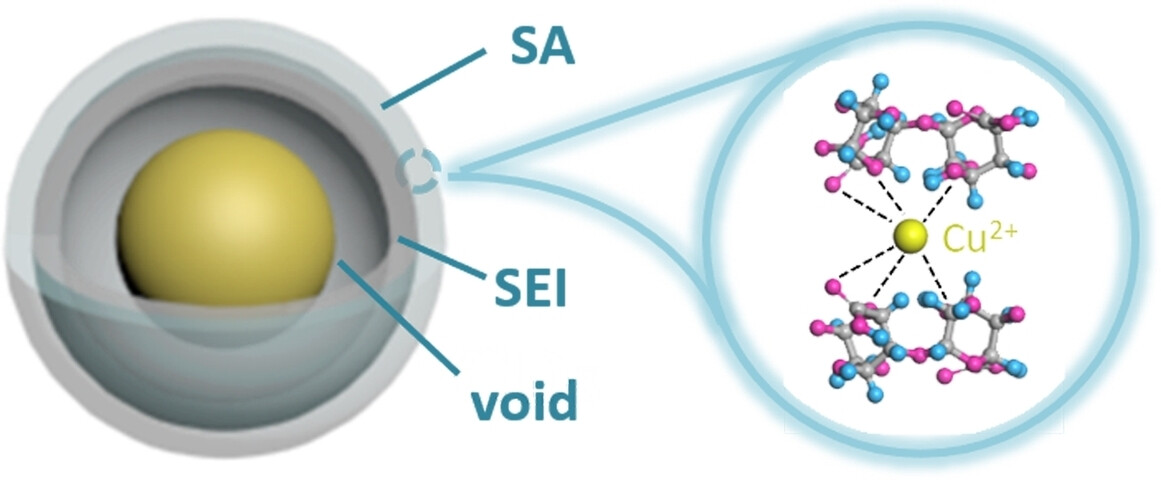
Organic electroltyte of spent lithium-ion batteries is utilized as fluorine source to in situ fluorinate the 3D porous Cu foam through a facile and mild solvothermal method. Benefiting from the protective solid-electrolyte interphase (SEI) and cross-linked sodium alginate (SA) layer, the optimized CuF2@void@SEI@SA cathode with pomegranate-like (yolk-shell) structure exhibits large specific capacity and superb cycling stability. This work not only provides new options for exploiting novel materials for large-scale high-density energy storage, the combined utilization of organic electrolyte of spent LIBs also realizes the unity of environmental, social and economic benefits.
Osmotic Energy Conversion | Hot Paper
Highly Anion-Conductive Viologen-Based Two-Dimensional Polymer Membranes as Nanopower Generators
- First Published: 04 July 2024
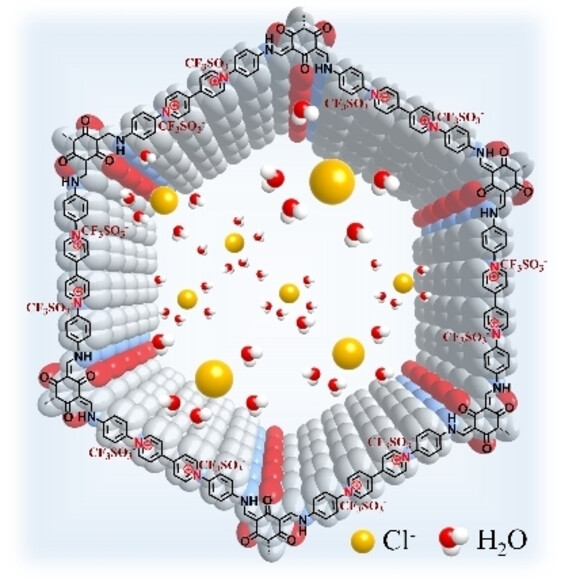
We developed a fully crystalline viologen-based 2DP (V2DP) membrane that can simultaneously achieve high ionic flux and selectivity, possessing great positive charge density and abundant ion transport nanochannels. Benefitting from the tailored pore size of 4.5 nm, it demonstrates an impressive current density of 5.5×103 A m−2 and maintains a substantial anion selectivity of 0.70, as a result, it realizes a remarkable power density of 55 W m−2.
Electrocatalysis | Hot Paper
Anode-Electrolyte Interfacial Acidity Regulation Enhances Electrocatalytic Performances of Alcohol Oxidations
- First Published: 08 July 2024
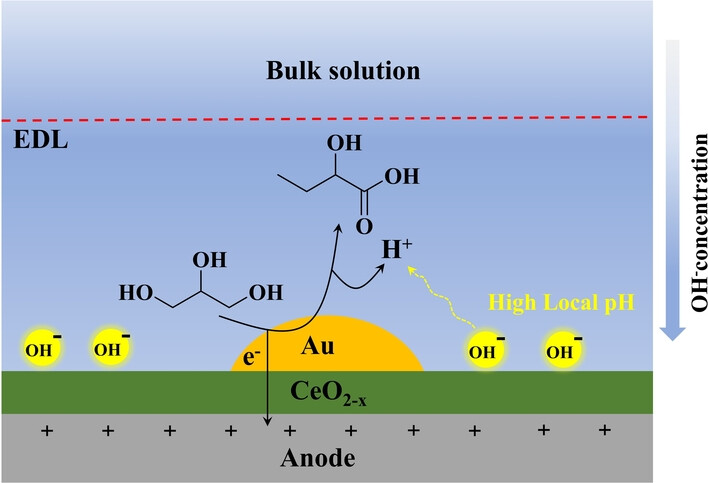
CeO2-x Lewis acid component has been employed as a supporter to couple with active metal Au nanoparticles to accelerate the diffusion and enrichment of OH− toward the anode surface, which ensures the much enhanced electrochemical activity (current density of 693 mA⋅cm−2) and selectivity (81 %) for lactic acid production, so as to accelerate the electrocatalytic oxidation of other alcohols.
Raman Spectroscopy
The Coking of a Solid Catalyst Rationalized with Combined Raman and Fluorescence Lifetime Microscopy
- First Published: 08 July 2024
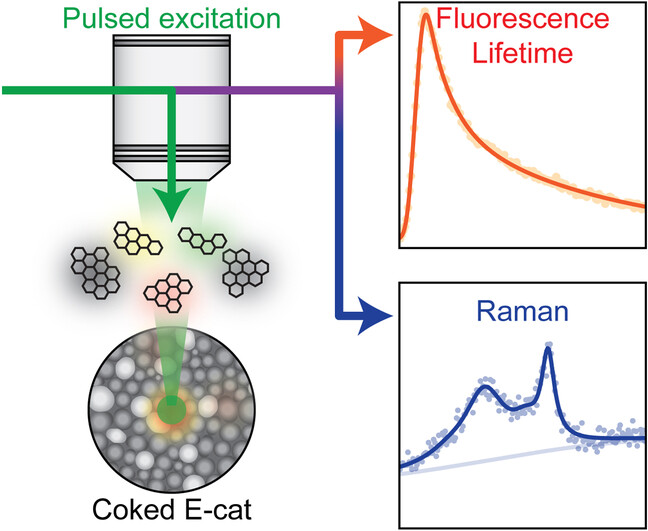
Combined Raman, fluorescence and fluorescence lifetime microscopy allows to study the coke formation process of an industrial equilibrium catalyst for fluid catalytic cracking. The changing fluorescence dynamics, together with extensive coke graphitization observed during in situ coking experiments with hexane as feedstock show that combining these three microscopy techniques provides a detailed physicochemical picture of the coking of a highly complex hydrocarbon conversion catalyst.
Circularly Polarized Long Afterglow | Hot Paper
Circularly Polarized Phosphorescence Energy Transfer Combined with Chirality-Selective Absorption for Modulating Full-Color and White Circularly Polarized Long Afterglow
- First Published: 10 July 2024
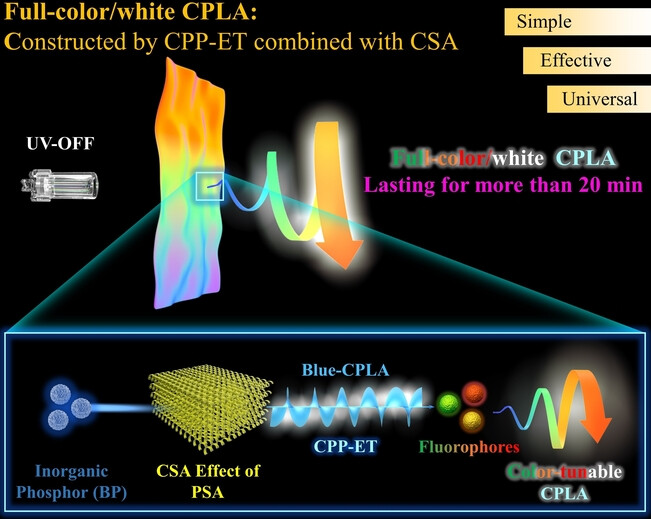
This work establishes a novel and universal strategy which combines circularly polarized phosphorescence energy transfer (CPP-ET) with chirality-selective absorption (CSA) of chiral polyacetylenes to construct full-color tunable circularly polarized long afterglow (CPLA). According to the strategy, full-color and white CPLA films with afterglow lasting for more than 20 min are prepared.
Thin-film Solar Cells
Se-Elemental Concentration Gradient Regulation for Efficient Sb2(S,Se)3 Solar Cells With High Open-Circuit Voltages
- First Published: 08 July 2024
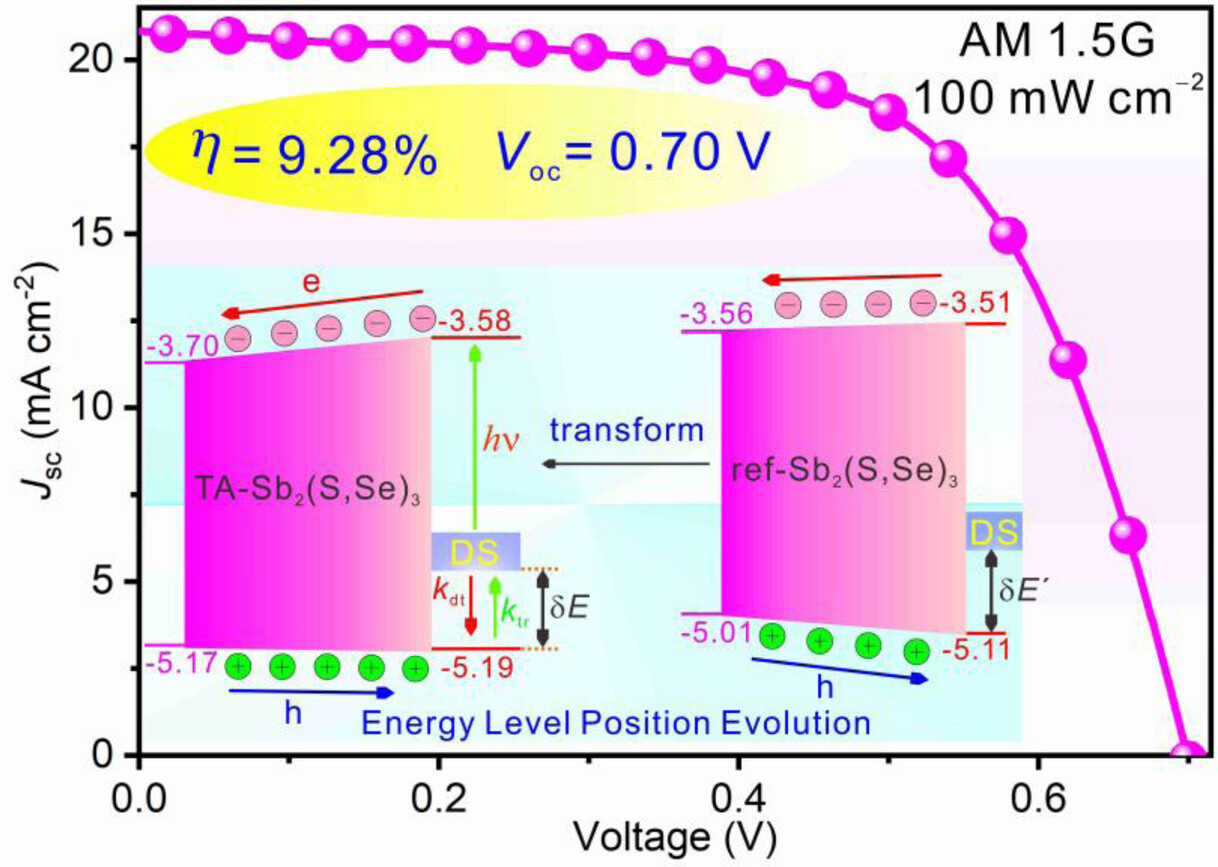
An innovative Se-elemental concentration gradient regulation strategy has been exploited for the first time through TA-synergistic dual-sulfur source to prepare high-quality Sb2(S,Se)3 films. This strategy regulates the energy level structures to produce a favourable energy band structure, suppressing hole-transport energy level barrier and amplifying electron-transport driving force. The champion Sb2(S,Se)3 PHJ solar cell displays an considerable efficiency of 9.28 % with the highest Voc of 0.70 V (η>9.0 %).
Polymer Chemistry | Hot Paper
A Versatile Reversible, Degenerative Chain Transfer Mechanism for the Catalytic Living Ring-Opening Metathesis Polymerization
- First Published: 09 July 2024

The typical termination procedure of a ROMP polymerization leaves with a methylene group at the polymer chain end. Here, we show that such end groups are capable of further reversible exchange between themselves when treated with catalytic amount of Grubbs catalysts under slow monomer addition condition. This newly discovered exchange mechanism uses inexpensive styrenes as the chain transfer agents for catalytic living ROMP to produce complex polymeric architectures.
Biochemistry
Pomotrelvir and Nirmatrelvir Binding and Reactivity with SARS-CoV-2 Main Protease: Implications for Resistance Mechanisms from Computations
- First Published: 03 July 2024
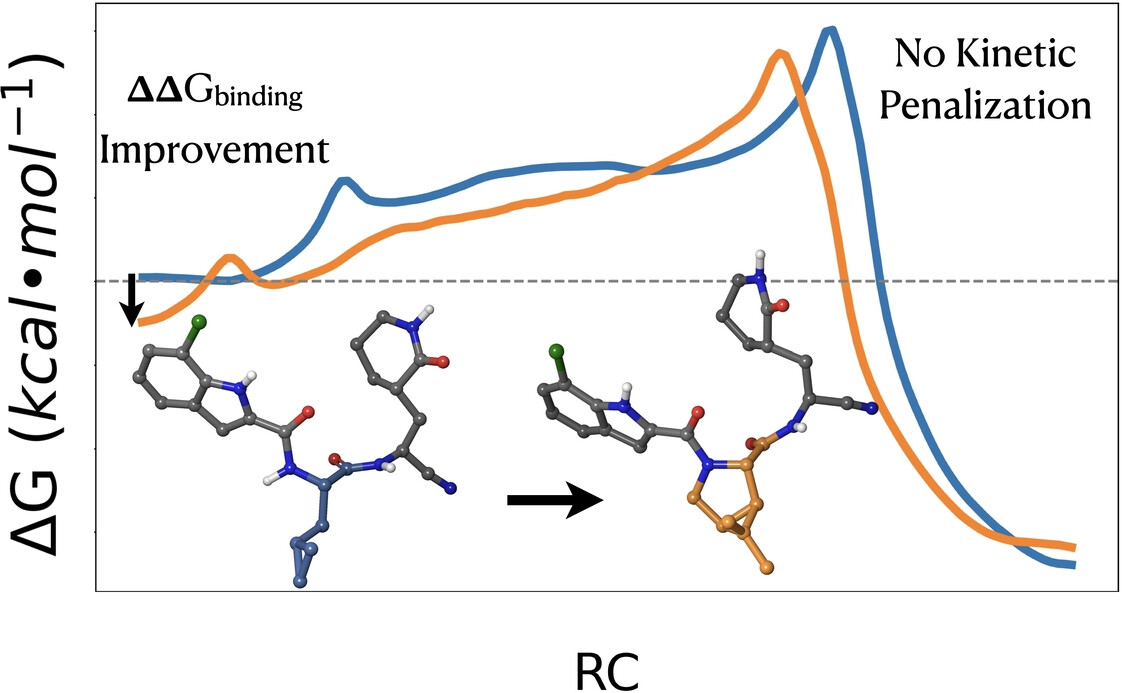
We study the inhibition mechanism of pomotrelvir against SARS-CoV-2 main protease, using MM and QM/MM simulations and free energy calculations. Transforming pomotrelvir's groups to those in nirmatrelvir revealed that tertiary amines are favored at P2, while flexible side chains at this position may disrupt active site organization. These insights may aid in designing improved inhibitors for current and future SARS-CoV-2 variants.
Chemiluminescent Probes
Half-Curcumin-Based Chemiluminescence Probes and Their Applications in Detecting Quasi-Stable Oxidized Proteins
- First Published: 09 July 2024
Batteries | Very Important Paper
Spatially Confined Engineering Toward Deep Eutectic Electrolyte in Metal-Organic Framework Enabling Solid-State Zinc-Ion Batteries
- First Published: 11 July 2024
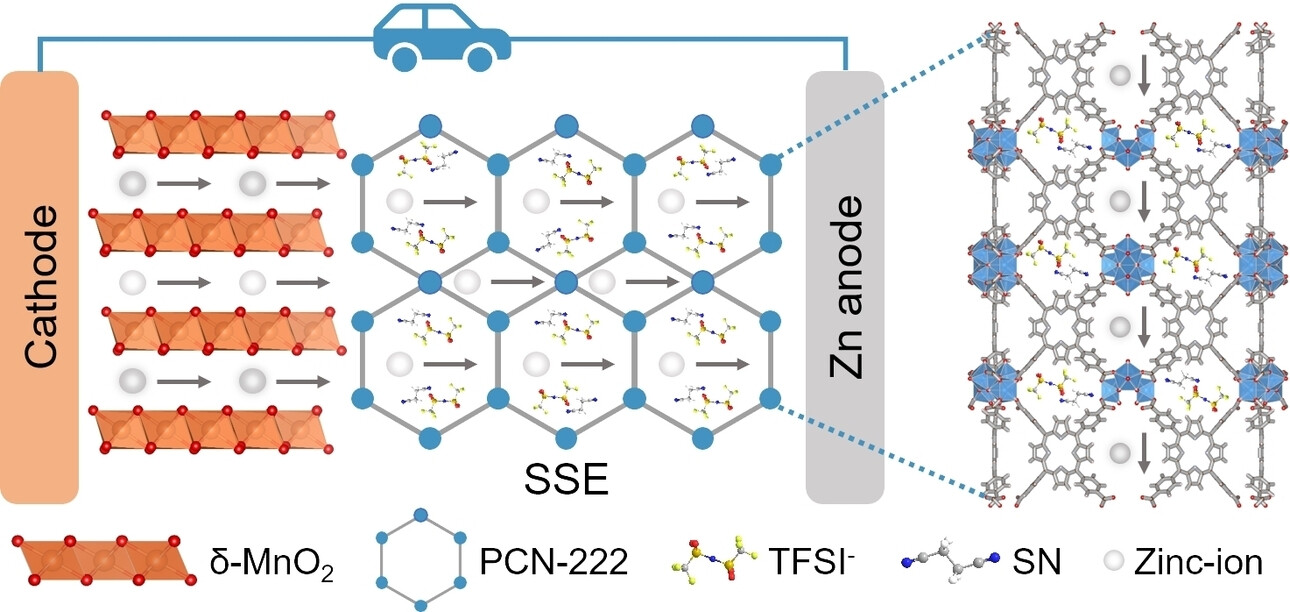
A strategy to prepare a novel solid-state Zn2+ conductor by confining deep eutectic electrolytes into the nanochannels of metal-organic frameworks is proposed. The obtained DEE@PCN-222 solid state electrolyte exhibits appreciable Zn2+ conductivity and highly reversible Zn plating/stripping ability with long-term stability. DEE@PCN-222-based solid-state ZIBs achieved favorable reversibility and effective protection of electrodes.
Coordination Cages
Highly Anisotropic Pd2Lab2Lcc2 and Pd2Lab2Lcd2 Type Cages by Heteromeric Completive Self-Sorting
- First Published: 01 July 2024
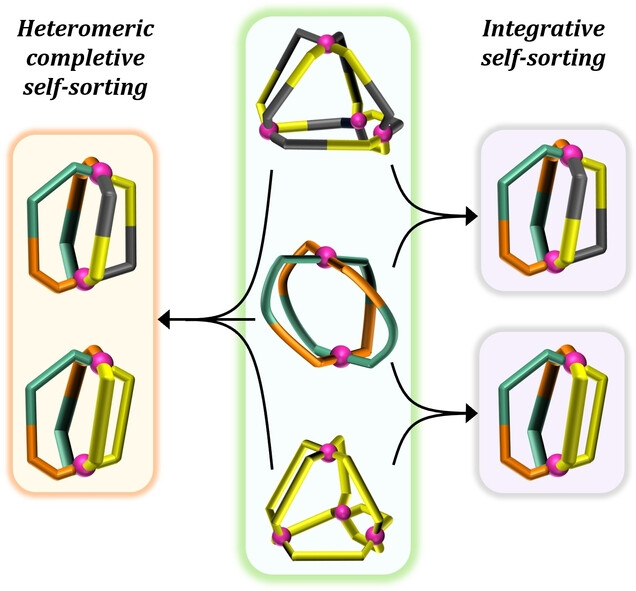
Inspired by the structurally complex biological systems, two highly anisotropic Pd(II)-based mixed ligated binuclear cages were self-assembled separately by integrative self-sorting of a binuclear cage with two different tetranuclear cages. Heteromeric completive self-sorting of the three homoleptic assemblies resulted exclusively in the simultaneous formation of the highly anisotropic cages.
Polymer Chemistry
Ultra-Fast Selenol-Yne Click (SYC) Reaction Enables Poly(selenoacetal) Covalent Adaptable Network Formation
- First Published: 18 June 2024
Photocatalytic CO2 Reduction | Hot Paper
Clustering-Resistant Cu Single Atoms on Porous Au Nanoparticles Supported by TiO2 for Sustainable Photoconversion of CO2 into CH4
- First Published: 18 June 2024
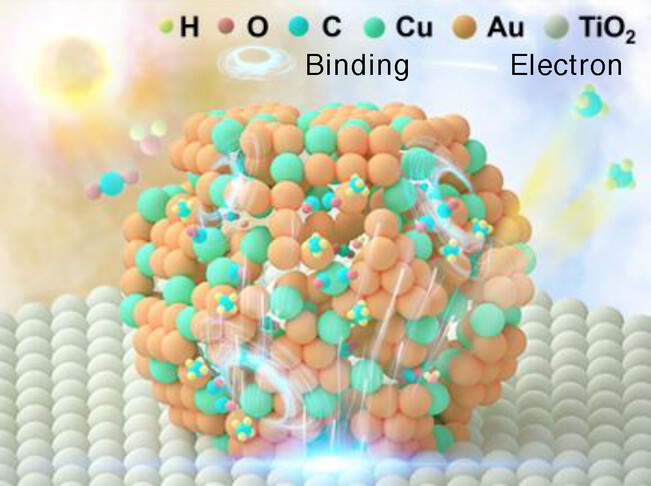
Short text for summary: This research ascertains the actual deactivation mechanism of CO intermediates induced Cu single atoms coalescence in CO2 photoreduction, and provides a reconstituted surface intermediates adsorption strategy to resist Cu single atoms aggregation by anchoring Cu single atoms into Au porous nanoparticles, thereby boosting the efficiency, selectivity, and sustainability of CO2 photoreduction.
Nitrate Reduction
p–d Orbital Hybridization in Ag-based Electrocatalysts for Enhanced Nitrate-to-Ammonia Conversion
- First Published: 08 July 2024

A typical Sn-doped Ag catalyst (SnAg) with strong p–d orbital hybridization achieves a remarkable Faradaic efficiency (FE) NH3 yield rate in electrocatalytic NO3− reduction at ampere-level, which can be further extended to Struvite production and Zn-NO3− battery. Mechanistic studies reveal that such p–d orbital hybridization in SnAg benefits nitrite deoxygenation, the rate-determining step for NH3 synthesis.
Photocatalysis | Hot Paper
Covalent Organic Framework Catalyzed Amide Synthesis Directly from Alcohol Under Red Light Excitation
- First Published: 02 July 2024

The direct synthesis of amides from alcohols typically involves homogeneous transition metal catalysts at high temperatures (130–140 °C). We report a COF-mediated dehydrogenative synthesis of amides under extremely low COF loading and red light irradiation to overcome these challenges. This method successfully produces a wide range of amides, including challenging secondary amides, with good to excellent yields and notable recyclability.
Ionogels
Jellyfish-Inspired Polyurea Ionogel with Mechanical Robustness, Self-Healing, and Fluorescence Enabled by Hyperbranched Cluster Aggregates
- First Published: 05 July 2024
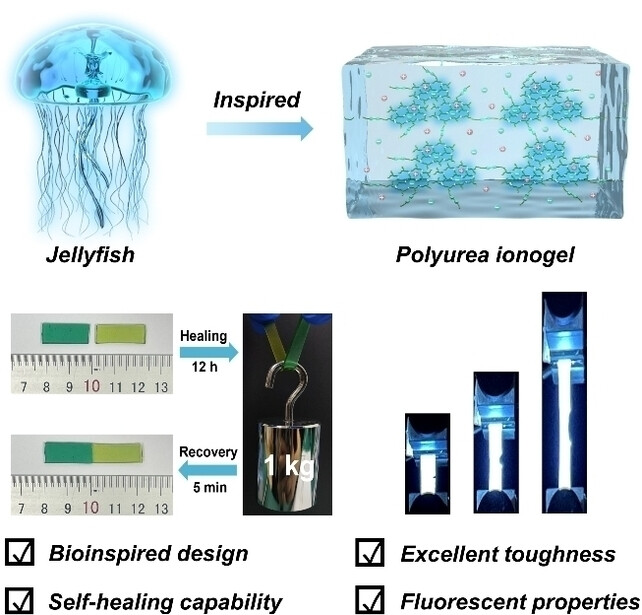
Inspired by the jellyfish, this study introduces a novel hierarchical crosslinking network architectural design strategy. It entails the in situ formation of hyperbranched cluster aggregates (HCA). Compared to the conventional dynamic crosslinked network structure of ionogel, this well-designed network imparts remarkable characteristics to the ionogel, including mechanical robustness (high strength, exceptional toughness, puncture resistance), low hysteresis, self-healing, and fluorescence. This network design is promising for developing advanced soft iontronics.
Polymer Chemistry | Very Important Paper
Polyelectrolyte-Mediated Modulation of Spatial Internal Stresses of Hydrogels for Complex 3D Actuators
- First Published: 23 June 2024
Methanol Oxidation Reaction | Very Important Paper
Halogen Tailoring of Platinum Electrocatalyst with High CO Tolerance for Methanol Oxidation Reaction
- First Published: 08 July 2024
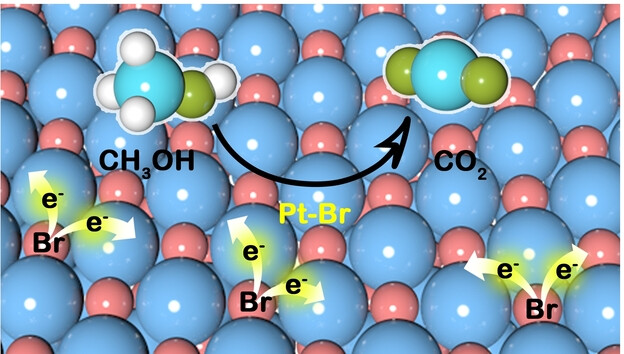
By synthesizing platinum halogen (bromine) nanoparticles, and simultaneously bromine bond with sp-C in graphdiyne (PtBr NPs/Br-GDY) as a model catalyst, we show an electron-rich structure catalyst introduced by the ligand of bromine to improve the catalytic performance and high CO-resistant of platinum catalysts during methanol oxidation reaction.
TADF and Clusters | Very Important Paper
Ln3+ Induced Thermally Activated Delayed Fluorescence of Chiral Heterometallic Clusters Ln2Ag28
- First Published: 26 June 2024
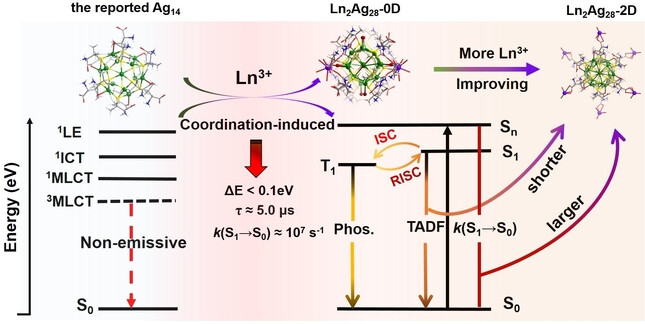
A series of 0D chiralclusters L-/D-Ln2Ag28-0D (Ln=Eu/Gd) and 2D chiral cluster-based frameworks L-/D-Ln2Ag28-2D (Ln=Gd) with TADF induced by the coordination of Ln3+ ions were prepared. In the absence of energy transfer between Ln3+ and Ag(I) hetero-metals, while maintaining ΔE(S1–T1) small enough, it can significantly increase k(S1→S0) and reduce TADF decay time by adjusting the type or number of Ln3+ ions.
Batteries
Confined Element Distribution with Structure-Driven Energy Coupling for Enhanced Prussian Blue Analogue Cathode
- First Published: 03 July 2024
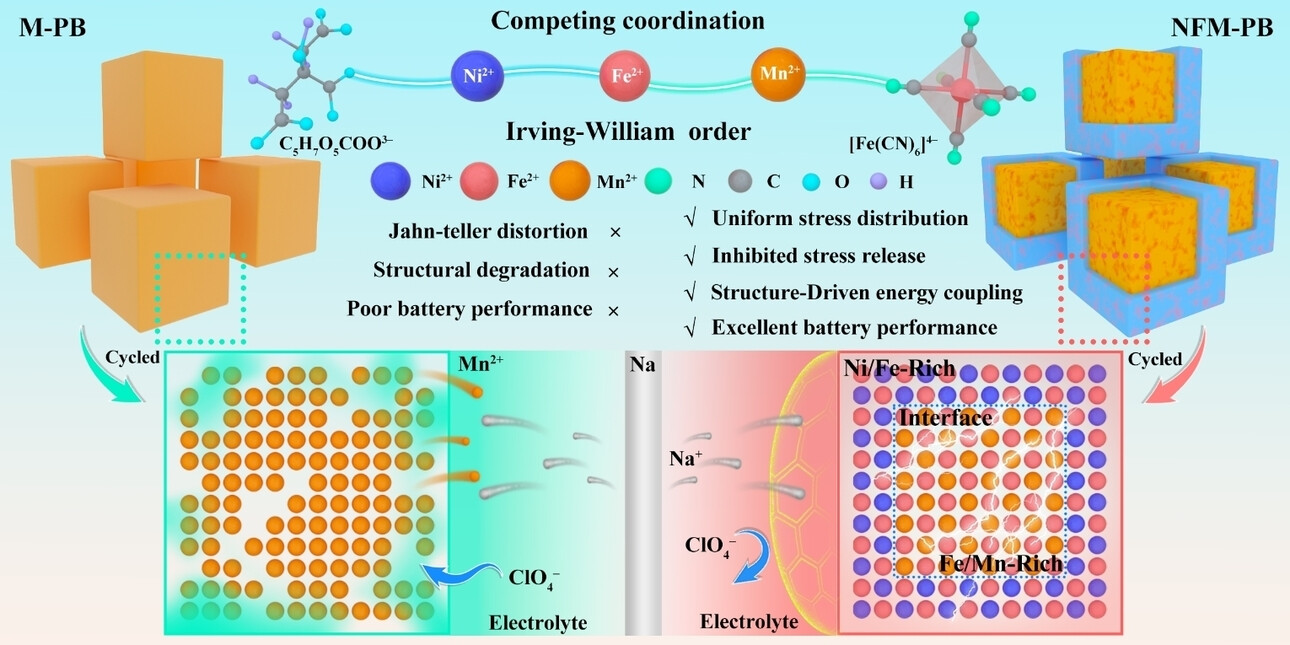
Inspired by the Irving-William order, a novel application of adjustable composition property, through constructing a coordination competition relationship between chelators and [Fe(CN)6]4− to directionally tune the enrichment of elements at the M1 site of Prussian blue analogues, is proposed to restrain localized enrichment and release of stresses and induce structure-driven energy coupling phenomenon.
Selective Inhibitors
A Small-Molecule Inhibitor of Factor Inhibiting HIF Binding to a Tyrosine-Flip Pocket for the Treatment of Obesity
- First Published: 26 June 2024
Solar Cells | Very Important Paper
Tailored Supramolecular Interactions in Host–Guest Complexation for Efficient and Stable Perovskite Solar Cells and Modules
- First Published: 12 July 2024
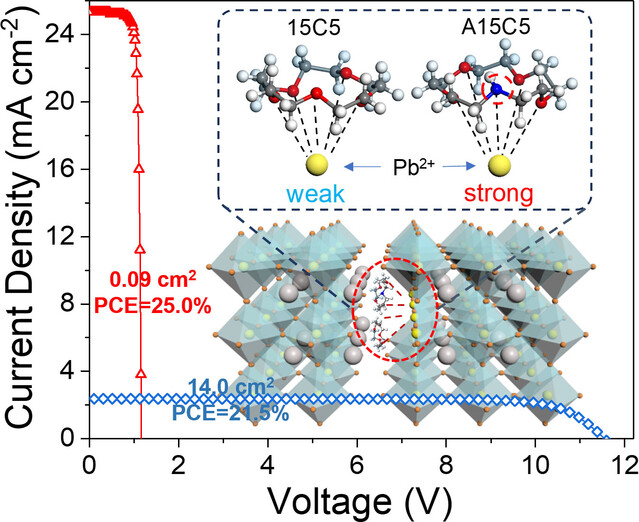
Dipole moment of crown ethers indicates their supramolecular interactions with perovskites. Higher dipole moments enhance coordination with lead cations, improving film morphology and optoelectronic properties. Optimized host–guest complexation led to perovskite solar modules reaching a 21.5 % efficiency over 14.0 cm2.
Ring Contraction | Very Important Paper
Ring Contraction of Saturated Cyclic Amines and Rearrangement of Acyclic Amines Through Their Corresponding Hydroxylamines
- First Published: 02 July 2024

A novel rearrangement promoted by a B(C6F5)3-hydrosilane pair enables the regioselective ring contraction of saturated cyclic hydroxylamines as well as the skeletal reorganization of acyclic derivatives. The method overcomes the limitations of traditional uncatalyzed Stieglitz rearrangements, allowing for swift structural transformations between different types of amines. The mechanism of this rearrangement is investigated by control experiments and DFT calculations.
Metal–Organic Frameworks
Experimental and Theoretical Elucidation of the Luminescence Quenching Mechanism in Highly Efficient Hg2+ and Sulfadiazine Sensing by Ln-MOF
- First Published: 01 July 2024
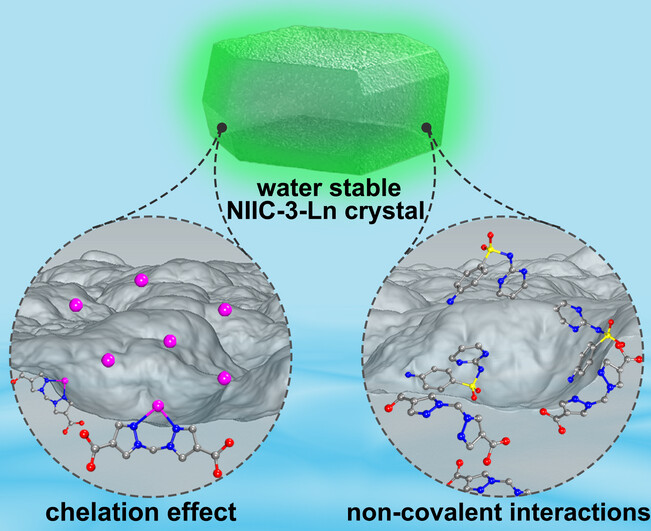
Luminescent Ln-MOF NIIC-3-Tb demonstrated highly selective quenching response toward Hg2+ and sulfadiazine (SDI) at subnanomolar concentrations. The sensing mechanism through Hg2+ chelation was proposed based on SCXRD analysis and the interaction with SDI was revealed using a newly developed approach involving a TD-DFT based quantification of the charge transfer of a MOF-analyte supramolecular complex model in the ground and excited states.
NH3 Synthesis | Very Important Paper
Highly Stable Perovskite Oxides for Electrocatalytic Acidic NOx− Reduction Streamlining Ammonia Synthesis from Air
- First Published: 19 June 2024
Electrocatalysis
Edge-Rich Pt−O−Ce Sites in CeO2 Supported Patchy Atomic-Layer Pt Enable a Non-CO Pathway for Efficient Methanol Oxidation
- First Published: 28 June 2024
Analytical Chemistry
Nanometer-Resolved Mapping of Organic Cation Migration Behavior in Methylammonium Lead Halide Perovskites
- First Published: 27 June 2024

Combining with the surface sensitive heterodyne mode and volume sensitive homodyne mode of infrared photo induced force microscopy, the 3-dimensional organic ion migration behaviors in organic metal halide perovskite has been imaged with sub-10 nm resolution, revealing the bias-dependent transition of MA+ migration channels from grain boundaries to grains and allowing the calculation of MA+ drift velocity across GBs.
Carbonylation | Hot Paper
Modular and Diverse Synthesis of Acrylamides by Palladium-Catalyzed Hydroaminocarbonylation of Acetylene
- First Published: 10 July 2024

A general palladium-catalyzed hydroaminocarbonylation of acetylene towards important acrylamide derivatives is presented. The novel synthetic protocol shows high functional group-compatibility, high atom efficiency and good chemoselectivity to obtain a variety of bio-active compounds including several actual drugs.
Bioimaging
Development of a Dual-Factor Activatable Covalent Targeted Photoacoustic Imaging Probe for Tumor Imaging
- First Published: 27 June 2024
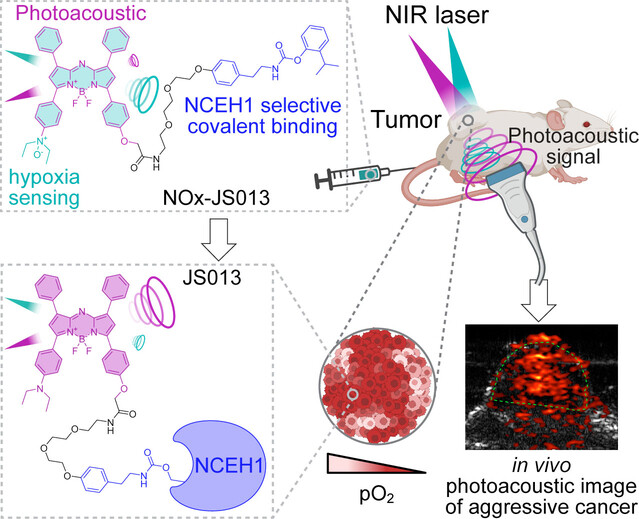
We developed an NCEH1-targeted covalent photoacoustic imaging probe activated under hypoxia. This probe potently and selectively labels NCEH1, an aggressive tumor associated serine hydrolase, in cells and is also activated under hypoxic conditions. Through covalent labeling and hypoxia activation, this probe offers selective and high-quality in vivo tumor imaging of aggressive prostate cancer.
Cancer Therapy | Very Important Paper
Sub-Nanosheet Induced Inverse Growth of Negative Valency Au Clusters for Tumor Treatment by Enhanced Oxidative Stress
- First Published: 04 July 2024
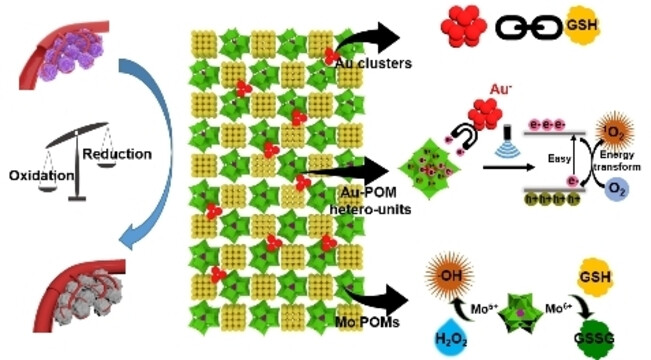
Au clusters with negative valence supported by sub-1 nm POM-LDH facilitate the hole-electron separation in POMs and enhance the ROS generation under US, the sub-1 nm Au clusters with ultrahigh surface atom ratios exhibit remarkable efficiency for GSH depletion, the reversible redox of Mo in POM is able to deplete GSH and trigger CDT simultaneously. The serious imbalance of redox in the TME leads to death of tumor ultimately.
Batteries
Hollow Core-Shelled Na4Fe2.4Ni0.6(PO4)2P2O7 with Tiny-Void Space Capable Fast-Charge and Low-Temperature Sodium Storage
- First Published: 18 June 2024
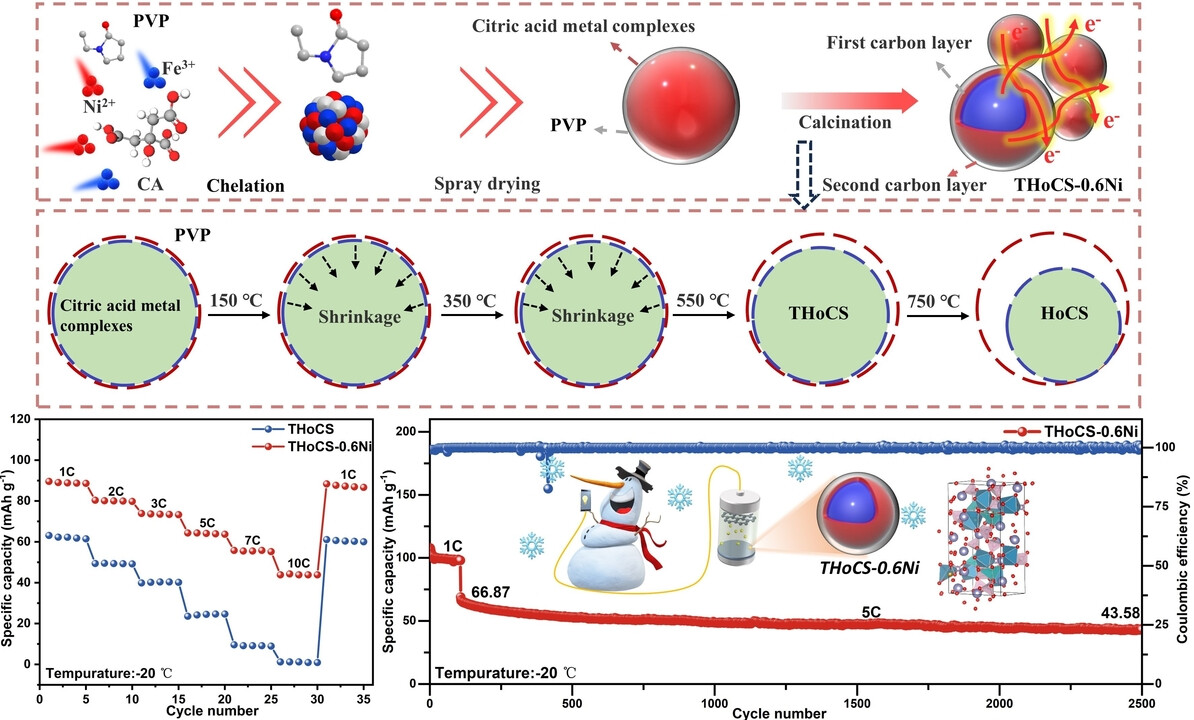
Hollow core–shell Na4Fe2.4Ni0.6(PO4)2P2O7 with tiny-void space was synthesized by one-step spray drying and calcination for the first time due to the different viscosity, coordination ability, ratios, and shrinkage rates between CA and PVP, which ensures high energy density and relieves volume expansion, combining with regulation on Na+ diffusion path and energy barrier by doping Ni to achieve fast charging and low-temperature sodium storage.
Click Chemistry
Enabling Modular Click Chemistry Library through Sequential Ligations of Carboxylic Acids and Amines
- First Published: 28 June 2024

A double click strategy that enables the sequential ligation of carboxylic acids and amines with FSO2NCO has been developed. This method provides facile access to modular click chemistry library under simple conditions in tubes or on 96-well microplates. Preliminary screening reveals that some compounds exhibit high antimicrobial activities against S. aureus and MRSA, highlighting the potency of this method in high-throughput medicinal chemistry.
Host-Guest Systems
Enhancing Effect of Fullerene Guest and Counterion on the Structural Stability and Electrical Conductivity of Octahedral Metallo-Supramolecular Cages
- First Published: 01 July 2024
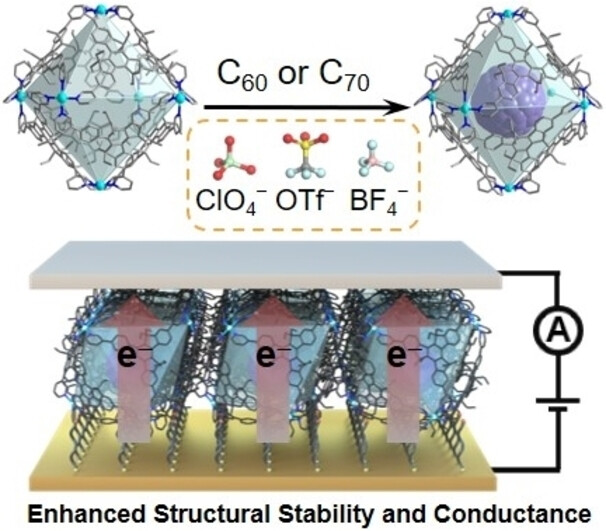
A series of octahedral metallo-cages and cage-fullerene (C60 and C70) complexes have been constructed to explore electrical conductivity at both the single-molecule level and aggregated bulk state. Both the counterions and fullerenes effectively tune the electronic structures and packing density of the metallo-supramolecular assemblies, and facilitate efficient charge transfer between the cage hosts and fullerenes, resulting in a notable one order of magnitude increase in the electrical conductivity of the aggregated state.
H2O2 Synthesis
Topology Control of Covalent Organic Frameworks with Interlaced Unsaturated 2D and Saturated 3D Units for Boosting Electrocatalytic Hydrogen Peroxide Production
- First Published: 28 June 2024

A topology control strategy is reported to modulate the electron states of metal-free COF catalysts via interlacing unsaturated 2D and saturated 3D units. The 2D/3D framework interlaced COFs with locally irregular dimensions and typical D–A properties show high 2e− electrocatalytic activity, with the central carbon atoms of tetraphenyl-based units as active sites.
Supramolecular Chemistry | Hot Paper
Batteries
Single-Atom 3d Transition Metals on SnO2 as Model Cell for Conversion Mechanism: Revealing Thermodynamic Catalytic Effects on Enhanced Na Storage of Heterostructures
- First Published: 03 July 2024
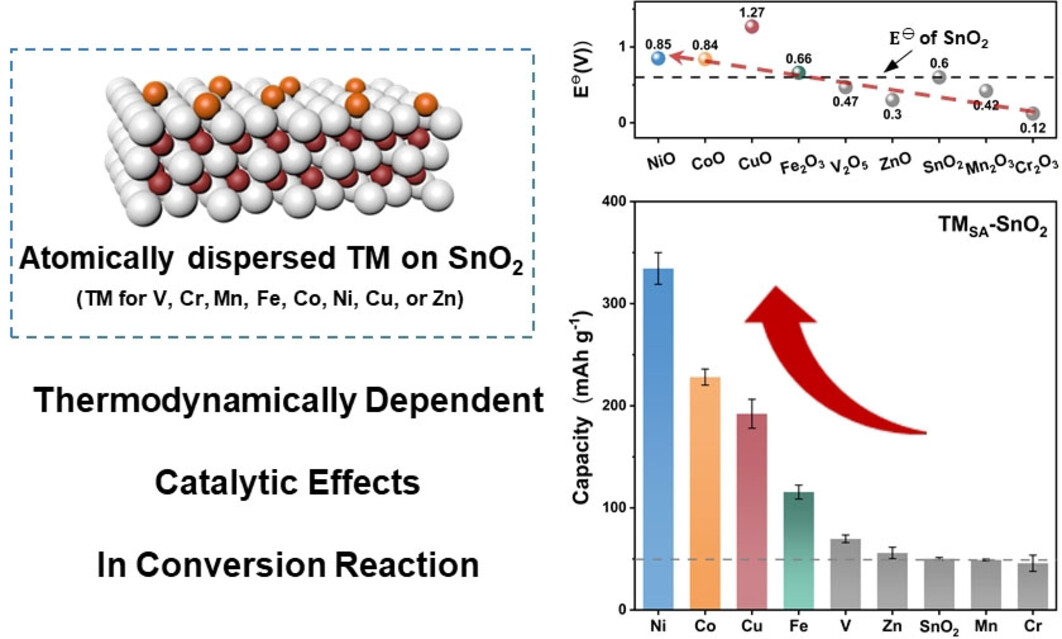
A series of model cells has been established for conversion reactions between Na and TMSA−SnO2, where TMSA−SnO2 represents eight different 3d transition elements (V to Zn) single atom into SnO2. A thermodynamic catalytic effect has been identified for the first time, significantly promoting conversion reactions and enhancing performance.
Enantioconvergent Catalysis | Hot Paper
Nickel-Catalyzed Enantioconvergent Allenylic Amination of Allenols Activated by Hydrogen-Bonding Interaction with Methanol
- First Published: 04 July 2024
Drug Nanocarriers | Hot Paper
Unlocking the Power of Human Ferritin: Enhanced Drug Delivery of Aurothiomalate in A2780 Ovarian Cancer Cells
- First Published: 01 July 2024

Aurothiomalate (AuTM), a potential anticancer drug, is here conjugated to human H ferritin (HuHf), which specifically targets tumor cells via binding transferrin receptor 1 (TfR1). The formation of a highly reproducible HuHf@AuTM bioconjugate is verified by ESI MS and other biophysical and computational methods. NMR metabolomics and antiproliferative tests point out that HuHf@AuTM is far more active than free AuTM.
CO2 Electrolysis
Anchoring Cs+ Ions on Carbon Vacancies for Selective CO2 Electroreduction to CO at High Current Densities in Membrane Electrode Assembly Electrolyzers
- First Published: 25 June 2024
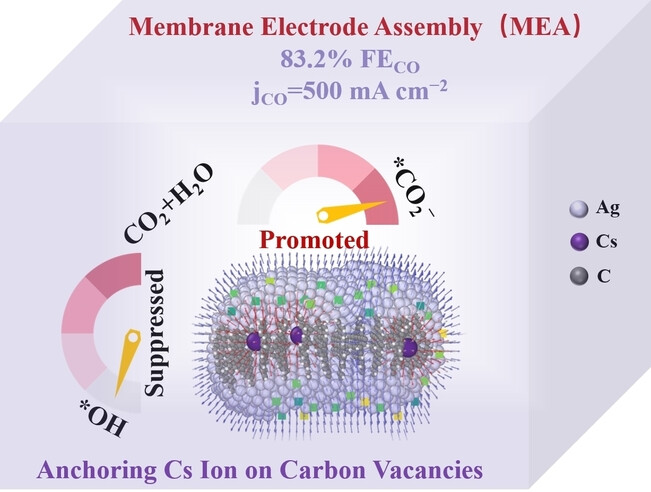
Innovative implementation of anchored Cs+ in membrane electrode assembly electrolyzers significantly enhances CO2 electrolysis by facilitating CO2− intermediates formation and reducing *OH adsorption via induced electric field. This approach achieves an impressive CO Faradaic efficiency of 83.2 % at 600 mA cm−2.
Nanoclusters
Large Scale Synthesis of a Stable Prefunctionalized Silver Nanocluster
- First Published: 04 July 2024
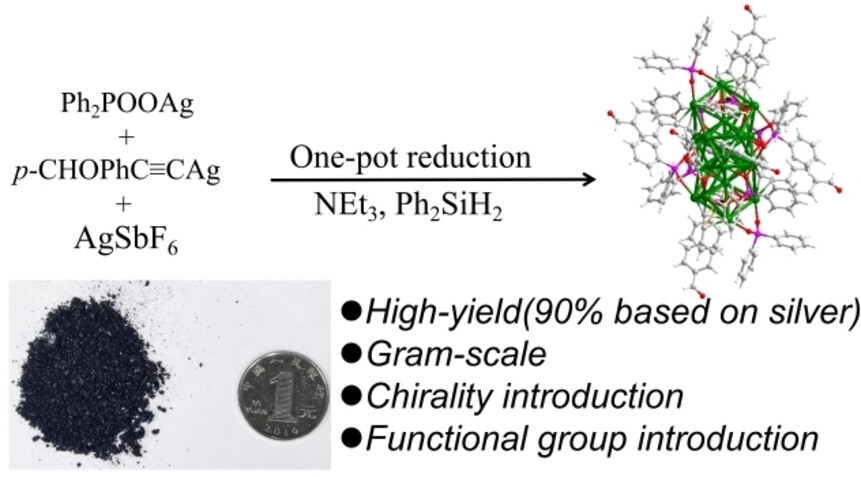
The ultrastable silver nanocluster [Ag21(Ph2PO2)10(p-CHOC6H4C≡C)6]SbF6 can be facilely synthesized in gram scale in ~90 % yield. The aldehyde groups preorganized in this cluster are available for further functionalization. Chiral modification through aldimine condensation gives homochiral clusters. The title cluster will be useful in the development of a variety of cluster-based materials.
Analytical Methods
Harnessing Cooperative Multivalency in Thioguanine for Surface-Enhanced Raman Scattering (SERS)-Based Differentiation of Polyfunctional Analytes Differing by a Single Functional Group
- First Published: 25 June 2024
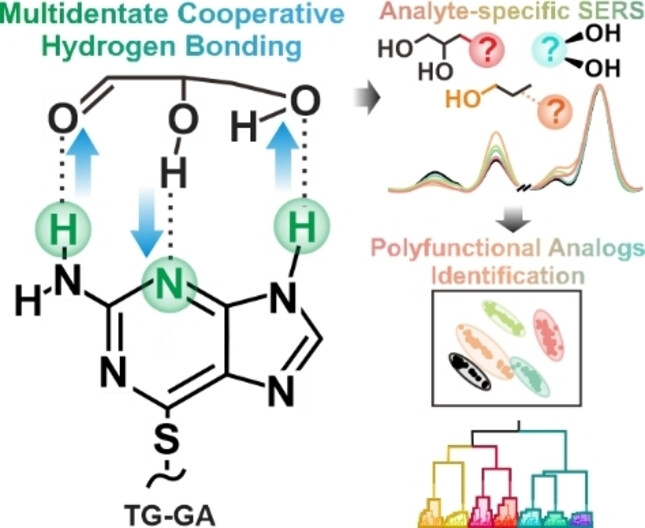
6-Thioguanine (TG), as a receptor capable of forming multidentate cooperative hydrogen bonding, enables the interaction with less-reactive functional groups and strengthens receptor-analyte complexation to achieve analyte-specific surface-enhanced Raman scattering (SERS) for accurate polyfunctional analog identification.
Asymmetric Catalysis
A Dual Cobalt-Photoredox Catalytic Approach for Asymmetric Dearomatization of Indoles with Aryl Amides via C−H Activation
- First Published: 19 June 2024

In this study, we showcase cobalt-catalyzed asymmetric dearomatization of indoles with aryl amides, achieving remarkable enantioinduction and exceptional regioselectivity. This dual catalytic strategy, which integrates photocatalyst and cobalt, represents a pioneering approach in asymmetric C−H bond functionalization. Through detailed experimental investigations and DFT calculations, we present a plausible mechanism to elucidate the reaction pathway.
Communication
Asymmetric Catalysis | Hot Paper
Asymmetric Dearomatization of Indoles through Cobalt-Catalyzed Enantioselective C−H Functionalization Enabled by Photocatalysis
- First Published: 19 June 2024

We report an efficient protocol for chiral dihydroisoquinolone-fused indolines through a cobaltaphotoredox catalyzed enantioselective C−H activation/dearomatization of indoles. Mechanistic studies indicate the excited photocatalyst was quenched by cobalt(II) species in the presence of Salox ligand. The stoichiometric reactions of cobaltacycle intermediate suggest the irradiation of light also play a critical role in the dearomatization step.
Electrocatalysis | Very Important Paper
A General Descriptor for Single-Atom Catalysts with Axial Ligands
- First Published: 21 May 2024
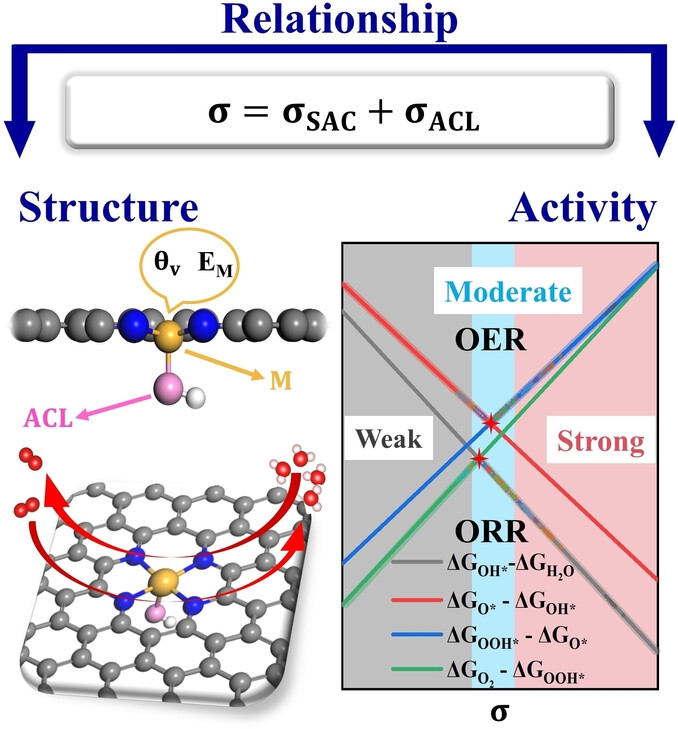
A general descriptor σ was constructed to predict the oxygen reduction/evolution reaction activity of axial coordination ligand single-atom catalysts (ACL-SACs). We identify that ACLs can weaken the adsorption capability of the metal atom (M) by raising the bonding energy levels of the M−O bond while enhancing dispersity of the d orbital of M. Importantly, an axial ligand descriptor σACL was also identified that can serve as a potential descriptor to determine the rate-limiting steps of ACL-SACs in experiment.
Nitrides
Synthesis and Comprehensive Studies of Be-IV-N2 (IV=Si, Ge): Solving the Mystery of Wurtzite-Type Pmc21 Structures
- First Published: 04 July 2024
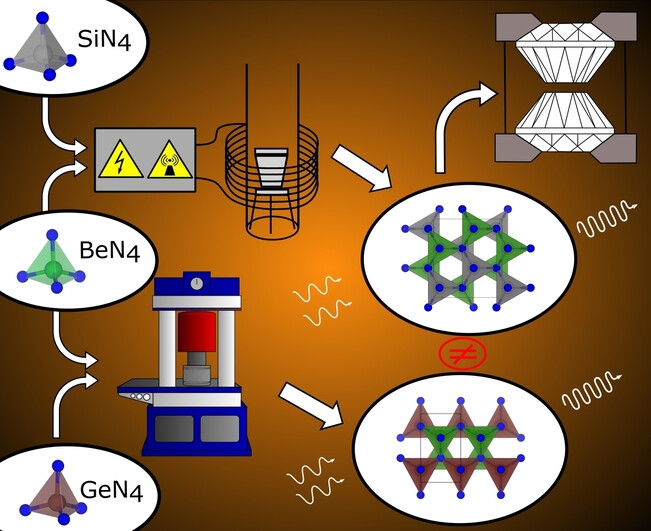
BeSiN2 was synthesized in a radio-frequency furnace, forming a structure typical for wurtzite-type nitride materials. The behavior under high-pressure conditions was elucidated in a diamond anvil cell. Reacting Be3N2 with Ge3N4 in a high-pressure, high-temperature approach gains access to a new substance class and to the unique structure of BeGeN2, which differs from that of the Si analog. Both materials show a second harmonic generation effect.
C-H functionalization
α’-Selective Selenium-catalyzed Allylic C−H Amination of Enol Derivatives
- First Published: 08 July 2024
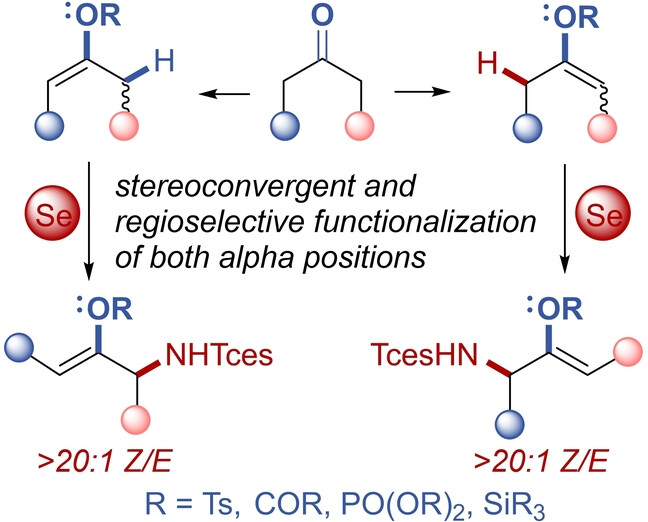
A selenium catalyst allows C−H amination of a wide range of potentially cross-reactive enol derivatives with unique selectivity for the α’-position, thereby unlocking the reactive potential of both ketone α-positions. Stereoconvergent formation of Z enol derivatives from E/Z mixtures eliminates the need for selective enolization methods. Resonance donation from the oxygen in the ene transition state is responsible for the high regioselectivity.
Cooperative Effects
Stabilization of Short- and Long-Range Magnetic Ordering through the Cooperative Effect of 1D [CuO4]∞ Chains and [CuO2X2] Quadrilateral in Quasi-1D Spin-1/2 Systems
- First Published: 09 July 2024
![Stabilization of Short- and Long-Range Magnetic Ordering through the Cooperative Effect of 1D [CuO4]∞ Chains and [CuO2X2] Quadrilateral in Quasi-1D Spin-1/2 Systems](/cms/asset/9adbb23c-3467-4d7c-a5cc-48bdb618e37a/anie202410428-toc-0001-m.jpg)
Quasi-1D chain antiferromagnets are considered a rich playground for investigating complex magnetic properties. We reported the synthesis, crystal structures, and magnetism of two novel copper-based 1D chain tellurates β-PbCu2(TeO3)2Cl2 and PbCu2(TeO3)2Br2. The short- and long-range magnetic ordering is stabilized through the cooperative effect of 1D [CuO4]∞ Chains and [CuO2X2] quadrilateral in this quasi-1D spin-1/2 System.
Interlayer Spacing
Large-Area Layered Membranes with Precisely Controlled Nano-Confined Channels
- First Published: 01 July 2024
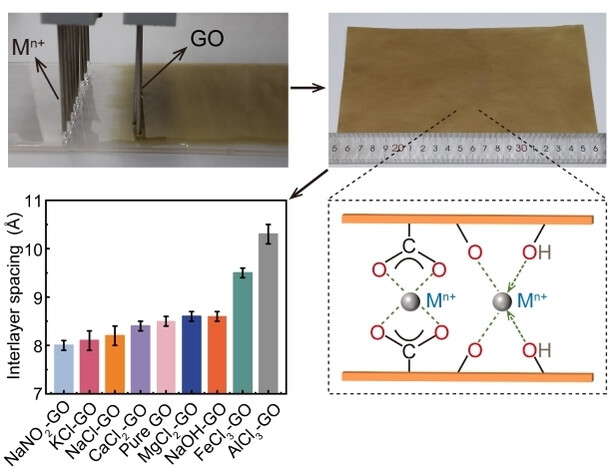
Superspreading shear-flow induces alignment of nanosheets, followed by rapid cross-linking of nanosheets with metal ions to form precisely controlled nano-confined channels. Due to the cross-linking between the metal ions and the nanosheets, the nano-confined channels exhibit excellent stability in different solutions and ionic sieving performance.
Hypervalent Compounds
2,2-Difluoroethylation of Heteroatom Nucleophiles via a Hypervalent Iodine Strategy
- First Published: 20 June 2024
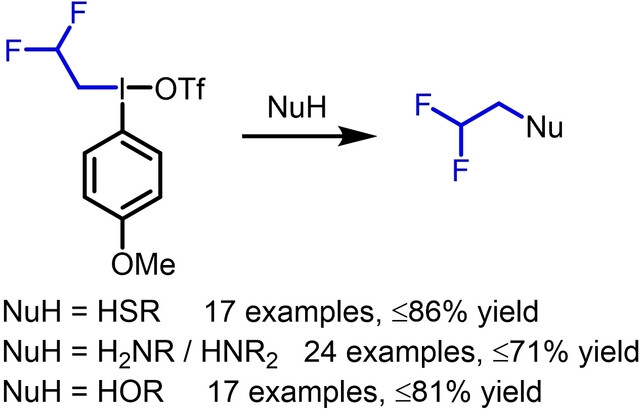
A new hypervalent iodine(III) reagent is disclosed for 2,2-difluoroethylation of thiols, amines and alcohols via a proposed ligand coupling mechanism. A range of pharmaceutically relevant nucleophiles are difluoroethylated, including morpholine, glucose and the drugs Captopril, Normorphine and Mefloquine.
Organic Flexible Crystals | Hot Paper
Capturing the Interplay Between TADF and RTP Through Mechanically Flexible Polymorphic Optical Waveguides
- First Published: 26 June 2024
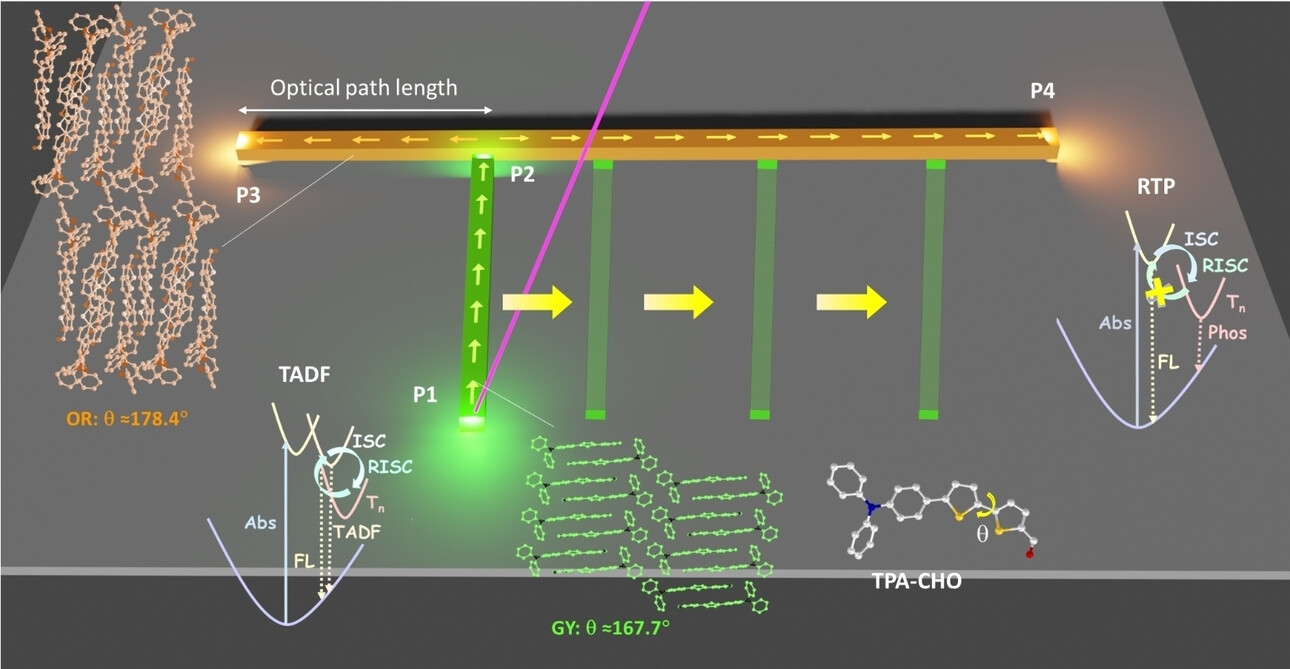
Flexible organic crystals offer pioneering options to explore diverse photophysical phenomena through clever crystal engineering principles. Here we demonstrate capturing the interplay between TADF and RTP through mechanically flexible polymorphic optical waveguides with the help of AFM-tip-based mechanophotonics technique.
Methodology
Overcoming Challenges in O-Nitration: Selective Alcohol Nitration Deploying N,6-Dinitrosaccharin and Lewis Acid Catalysis
- First Published: 10 July 2024

We present a novel catalytic approach for the mild and selective synthesis of nitrate esters by direct O-nitration of alcohols and diols. Using stable N,6-dinitrosaccharin and magnesium triflate, this method tolerates a broad diversity of functional groups and is amenable to late-stage functionalization. DFT studies reveal a dual role of magnesium catalyst. This innovative method advances the synthesis of versatile nitrates for drug discovery.
Organic Light-Emitting Diodes | Very Important Paper
Design of Thermally Activated Delayed Fluorescence Materials: Transition from Carbonyl to Amide-Based Acceptor
- First Published: 12 July 2024

Transitioning from a carbonyl (O=C) to an amide (O=C−N) skeleton as the acceptor significantly enhances the electrochemical stability of thermally activated delayed fluorescence (TADF) materials. Benzoyl carbazole and carbazoline-based TADF materials function as efficient emitters for constructing non-doped OLEDs and serve as hosts for assembling narrowband red fluorescent OLEDs.
Supramolecular Chemistry | Very Important Paper
Spontaneous Transition between Multiple Conductance States and Rectifying Behaviors in an Artificial Single-Molecule Funnel
- First Published: 08 July 2024
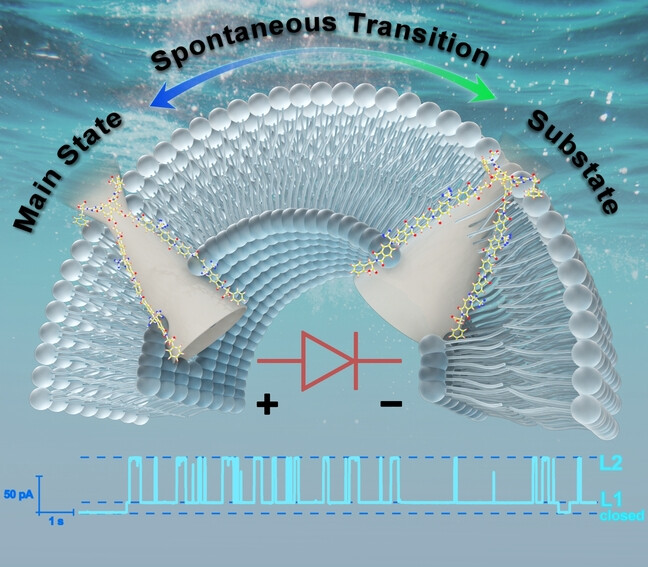
An artificial funnel-shaped single-molecule channel was constructed by an electron-deficient macrocycle and two electron-deficient aromatic imide arms. This molecular funnel exhibited multiple conducting states and spontaneous transitions between them, as well chloride-selective transport ability and voltage-dependent gating property (rectification) due to the asymmetrical channel structure.




